Someone famous once said: “You are not alone in this world; you are part of an ensemble”.
For decades now, a whole host of Bharatanatyam artistes have poured their creative imagination and energies into creating ensemble work that has not only brought to the fore a slew of artistic ideas and expressions but also in bringing together an array of dancers and collaborators who are invested in a common project, these dancers-choreographers-teachers who envisage an ensemble are perfect examples of the meaning and essence of the word, collaboration.
In this edition, we raise a toast to those who have dedicated their dance careers to the creation, production and presentation of ensemble work. We shine the spotlight on four Bharatanatyam exponents from Chennai – Anitha Guha, Jayanthi Subramaniam, Radhika Shurajit and Sheela Unnikrishnan.
Read on for a detailed interview where each of these artistes, responds to a common set of four questions
ANITHA GUHA
“Despite a series of challenges in creating ensemble work, what keeps us going is passion. It is the driving force that enables us to overcome obstacles and create magical productions,” says Chennai-based Bharatanatyam exponent, Anitha Guha
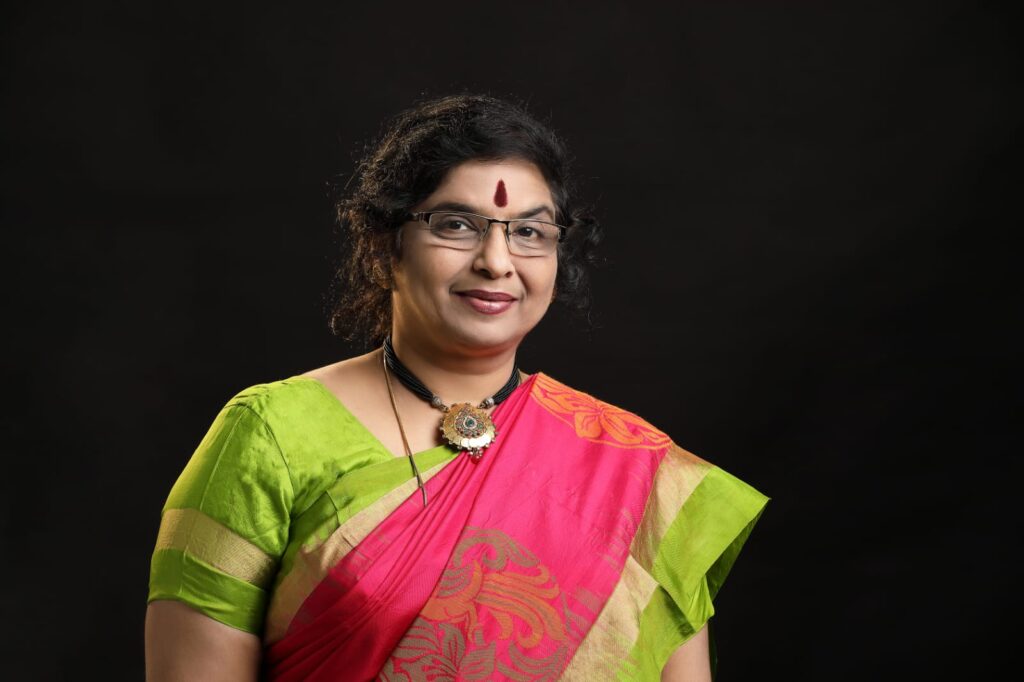
- What, in your view, is the magic of the ensemble?
A fantastic group presentation always weaves together several key elements: captivating storytelling or a cohesive theme, brilliant choreography, beautiful dance styles, extraordinary coordination and precision, a well-chosen cast of artistes who perfectly fit their roles, enchanting music, enhanced lighting techniques, aesthetic props, vibrant costumes, exquisite jewelry, and stunning make-up… Together, these components create a magical experience.
Our storytelling, rooted in the rich tapestry of the Puranas and Ithihasas, reaches out to the younger generation, providing a joyful and educational experience. It also offers them a platform to showcase their talents.
The ensemble format I have chosen is the traditional Nritya Natakam, which provides immense scope to learn various stories from our Puranic characters, understand their unique body language, and explore a wide range of emotions.
This holistic approach not only preserves our cultural heritage but also ensures its relevance for future generations, creating a bridge between the past and the present through the magic of performance.
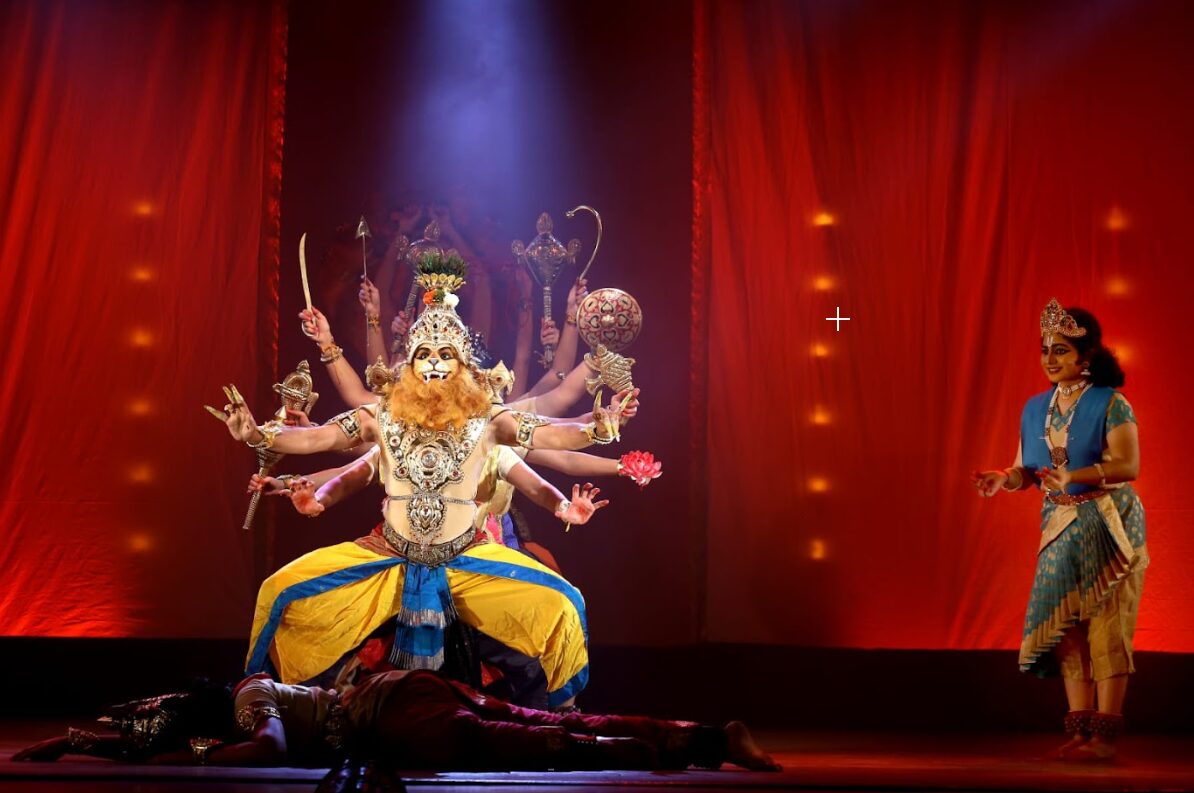
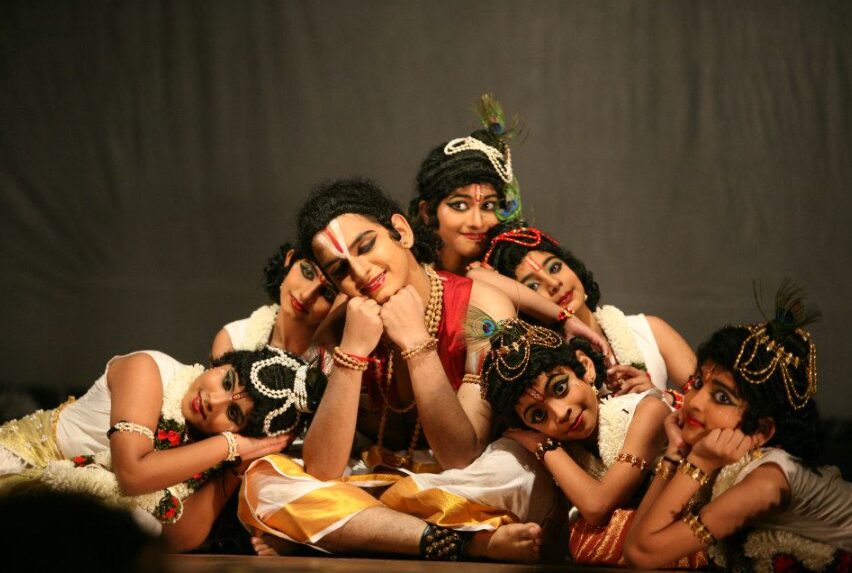
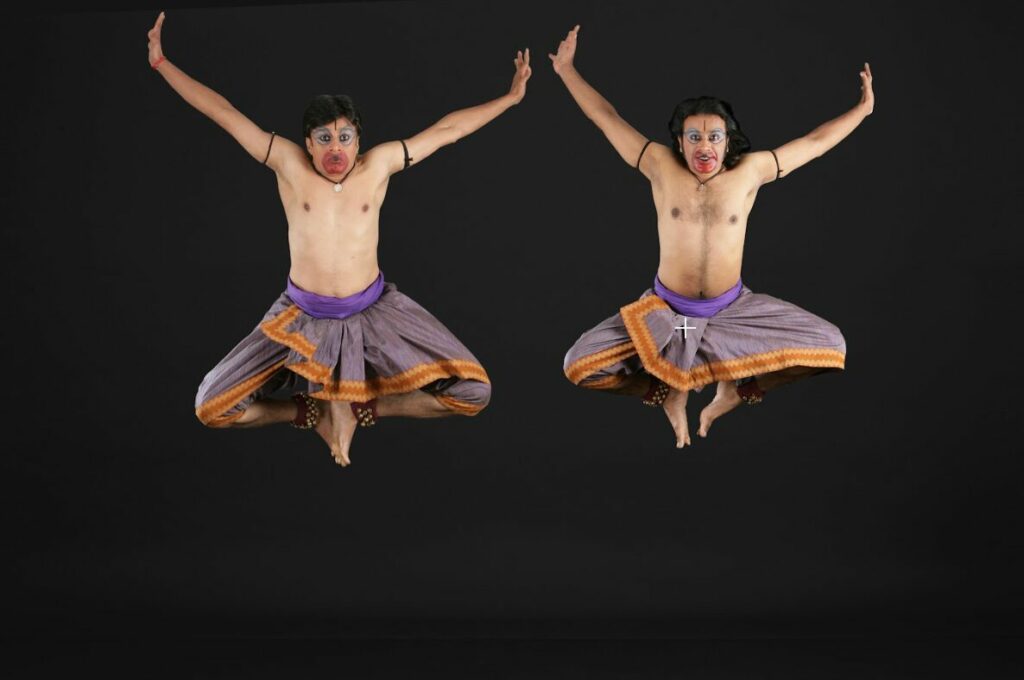
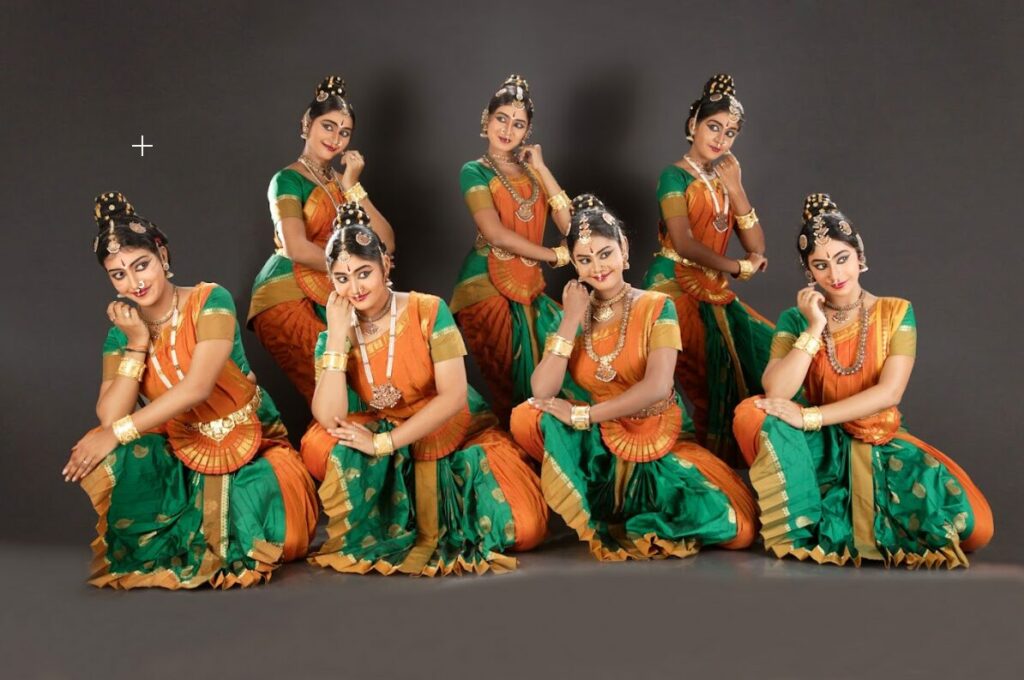
- From a creation perspective, the ensemble requires a different kind of vision, a different process of choreography, a different kind of time… What is usually your starting point and can you, in short, share your process with us?
First and foremost, a thorough study of the literature we plan to present is essential. Sometimes, this involves consulting a well-learned scholar for deeper insights. As I read or hear about the material, I naturally envision the production—it is God’s gift to all choreographers, I believe.
Next, I identify the major scenes to be emphasized and approximately plan the duration of each segment. Dancers are selected for various roles based on their talent, commitment, and suitability for the characters. Meanwhile, we choose suitable texts for the lyrics or create new ones, and work with renowned music composers to craft appropriate rhythms and diverse musical interludes.
It’s worth noting that sometimes choreography is developed first, with the music composed later to match the dance sequences. Once the baseline is set, I start choreographing with my students. Group sequences are choreographed, taught, and practiced diligently. To be honest, choreography often happens naturally, inspired by excellent music.
Simultaneously, each character’s role is individually developed with the dancer. We also design costumes, select good jewellery, plan lighting, and arrange props as needed. After rehearsing for a minimum of two to three months, we are ready to present on stage. Typically, a production takes six to eight months or even a year to complete. However, there have been instances where a smaller production was put together in just 15 to 20 days.
- In the world of today, what are some of the challenges of creating ensemble work?
The first challenge is, of course, securing the necessary funds. A production requires substantial financial support. Funding can be divided into two categories. The first is the initial production costs, which include remuneration for professional dancers and musicians, costumes, jewellery, audio recording, props (if used), lighting, stage rehearsal charges, make-up, et al.
Once the production is ready to be performed at different venues, the expenses, except for the musicians’ remuneration and audio recording, remain the same or can even double, especially for out-of-town performances. Unfortunately, except for a few organizations, most do not provide sufficient compensation, forcing artistes to find sponsors to support their endeavors.
Another major challenge is the availability of the same artistes for every program. Consequently, choreographers and teachers must constantly adapt, working with different dancers to bring the production to life.
Finally, before a performance, it is crucial for dancers to have a stage rehearsal. Completing the light design within the limited time available also poses a significant challenge.
Despite these challenges, what keeps us going is passion. It is the driving force that enables us to overcome obstacles and create magical productions.
- One of your most challenging projects till date?
Parishvanga Pattabhishekam, which we presented in Cleveland, has been my most challenging production to date. It was my first production in the United States of America and involved a collaboration with many dance gurus, their students, music composers, and musicians.
I was working with the esteemed music composer, Sangeetha Kalanidhi Sri Neyveli Santhanagopalan. Both he and I had numerous season commitments, and we had to complete this enormous project within just two months. This was quite a challenge.
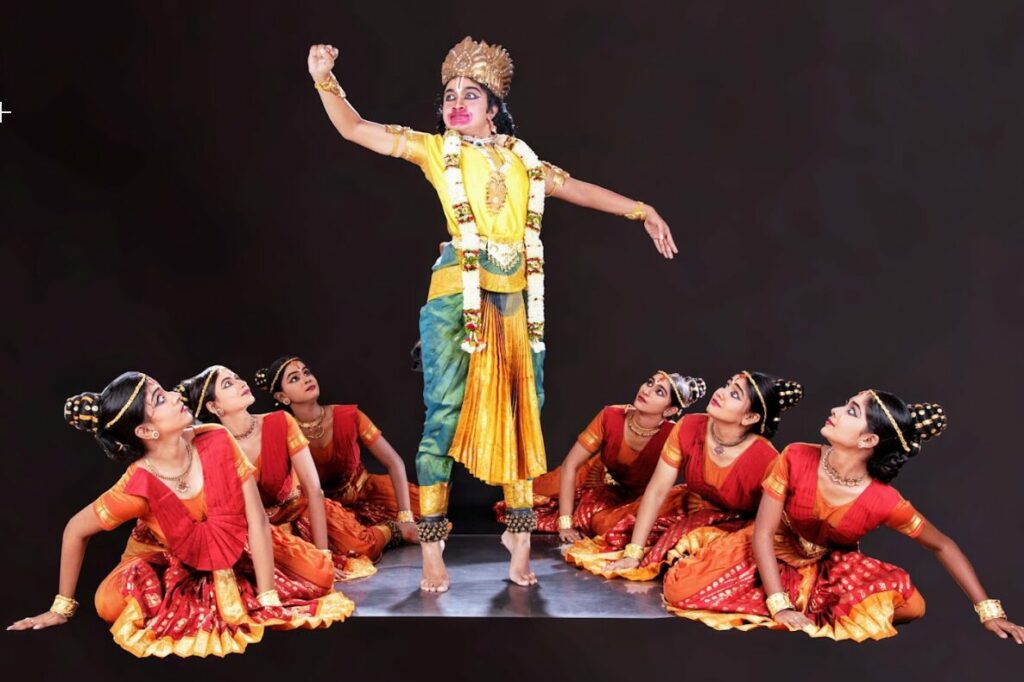
As the production was a collaborative interpretation of the Ramayana, each participant focused on one or two kandams. We had to share time, space, the orchestra, and rehearsal sessions with everyone involved. For many years, I had been working within the comfort zone of my own class, students, and my own time and space. This new venture pushed me far beyond those boundaries, causing considerable worry.
However, the program was eventually presented and was received extremely well by the audience. This success was a testament to the hard work and collaboration of all involved.ANITHA GUHA
Jayanthi Subramaniam
“Ensemble work is like many people performing but with a single mind. This harmony is what creates magic,” says Chennai-based Bharatanatyam exponent, Jayanthi Subramaniam
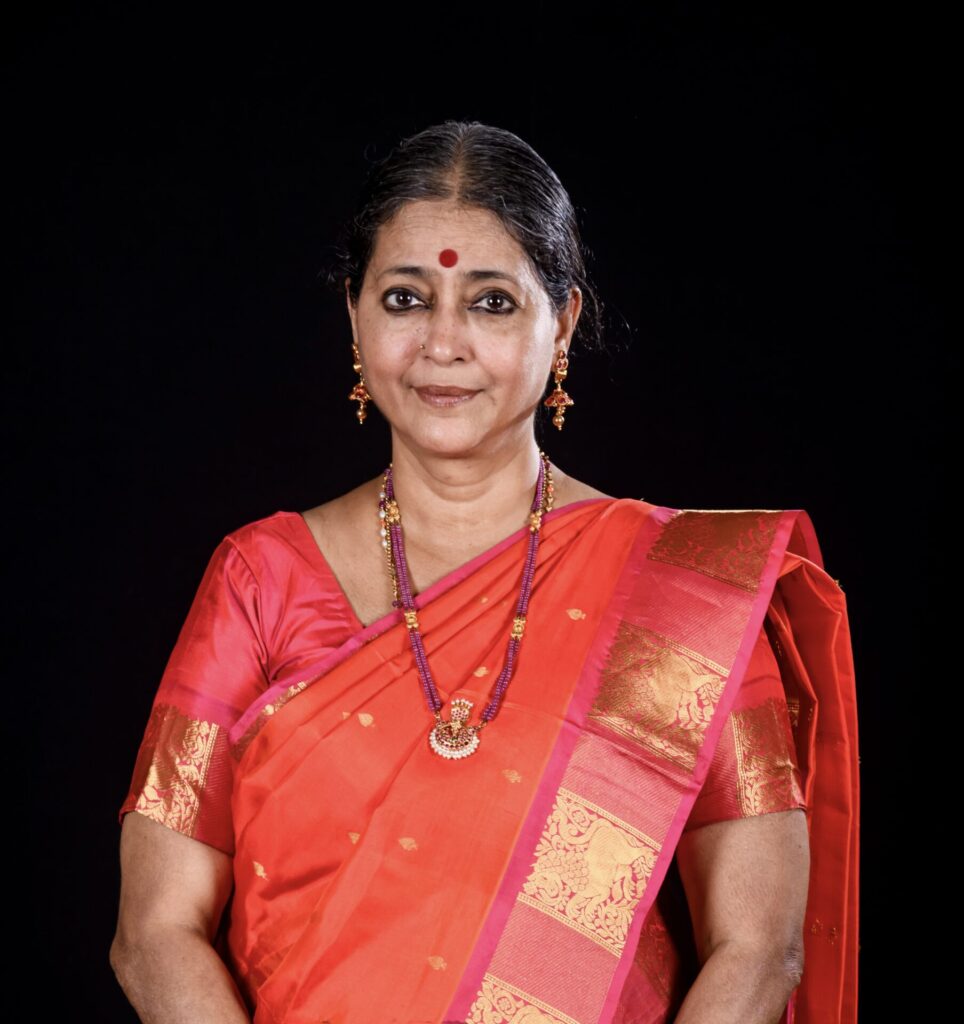
- What, in your view, is the magic of the ensemble?
The magic of the ensemble lies in the sheer energy that can be created by the coming together of artistes who are in perfect sync with each other – physically, mentally and emotionally. Ensemble work helps you develop as an artiste and more importantly, as a person. It’s not all about yourself and your artistry. You become and create a part of something that is larger than yourself. When you understand this basic principle you learn to shine without being overpowering. You understand how to create those magical moments within the role and space that you have.
No one is less important or more important. Ensemble work is like many people performing but with a single mind. This harmony is what creates magic. Ensemble work also allows us to explore mime, movement, music, make-up, costumes and lighting to their maximum potential.

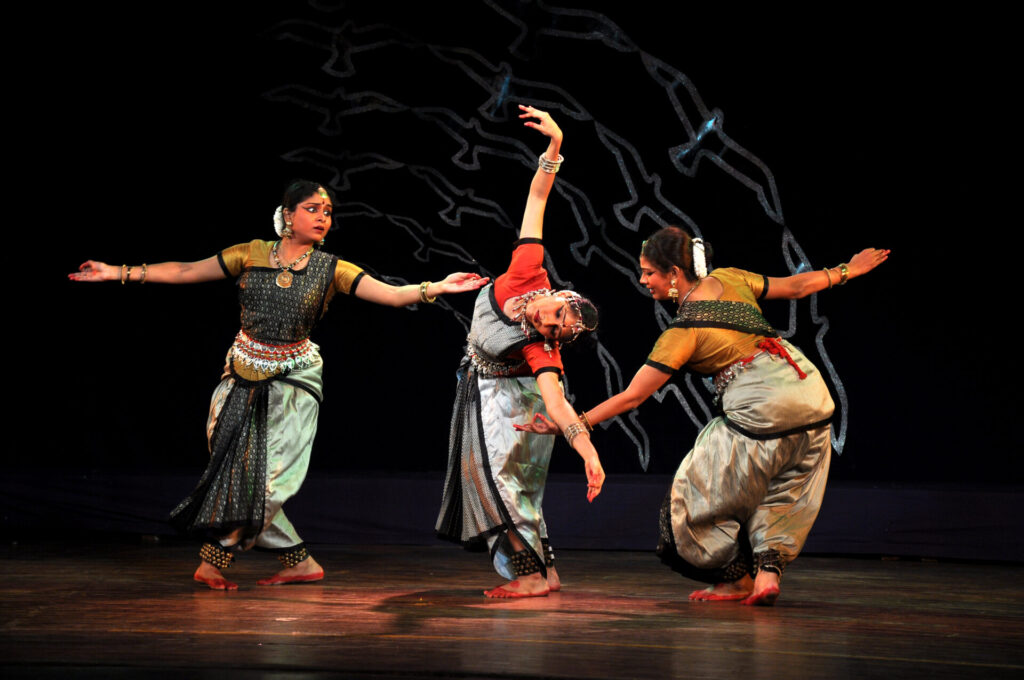
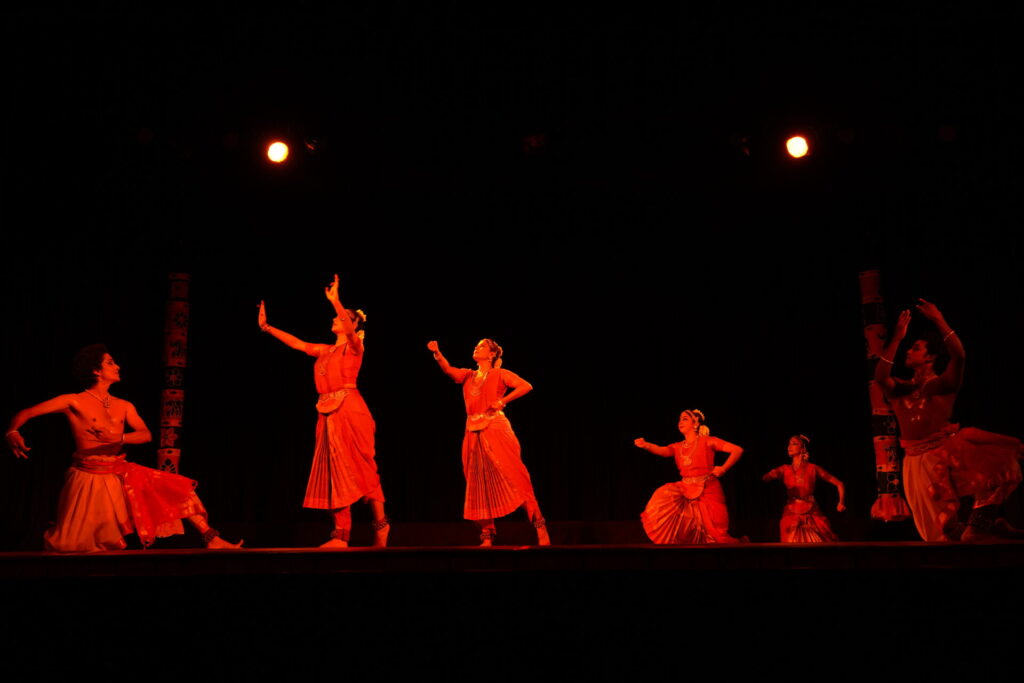
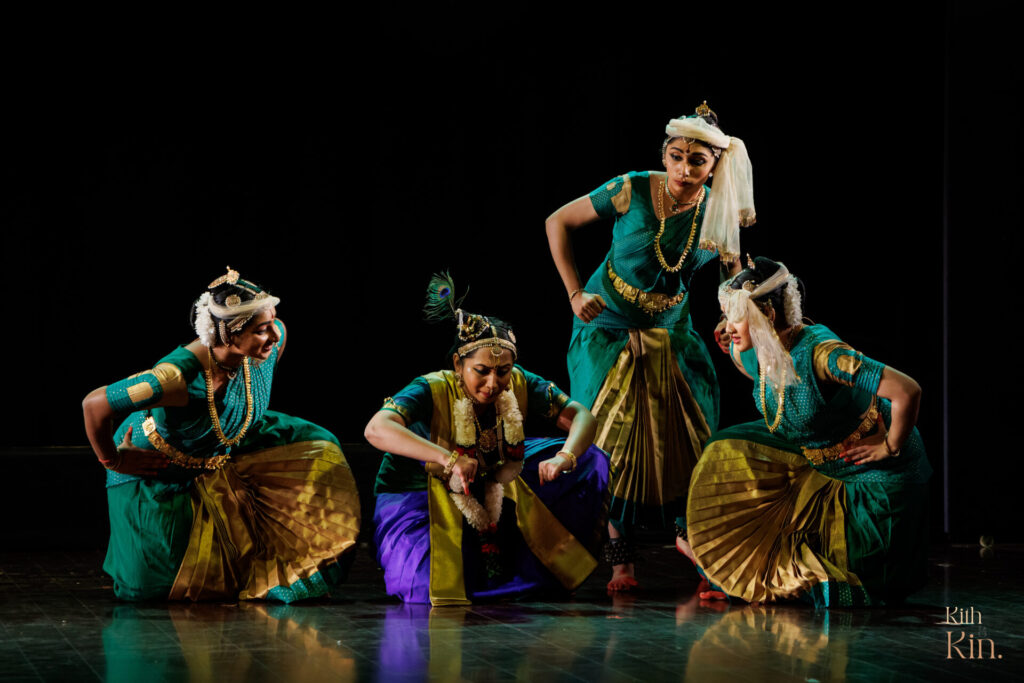
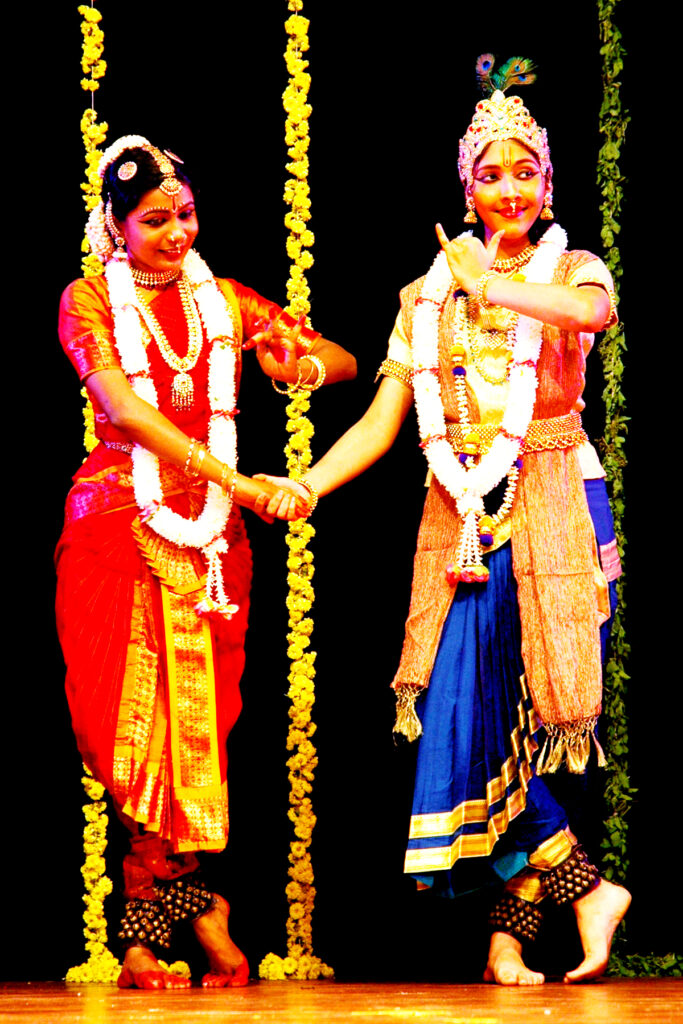
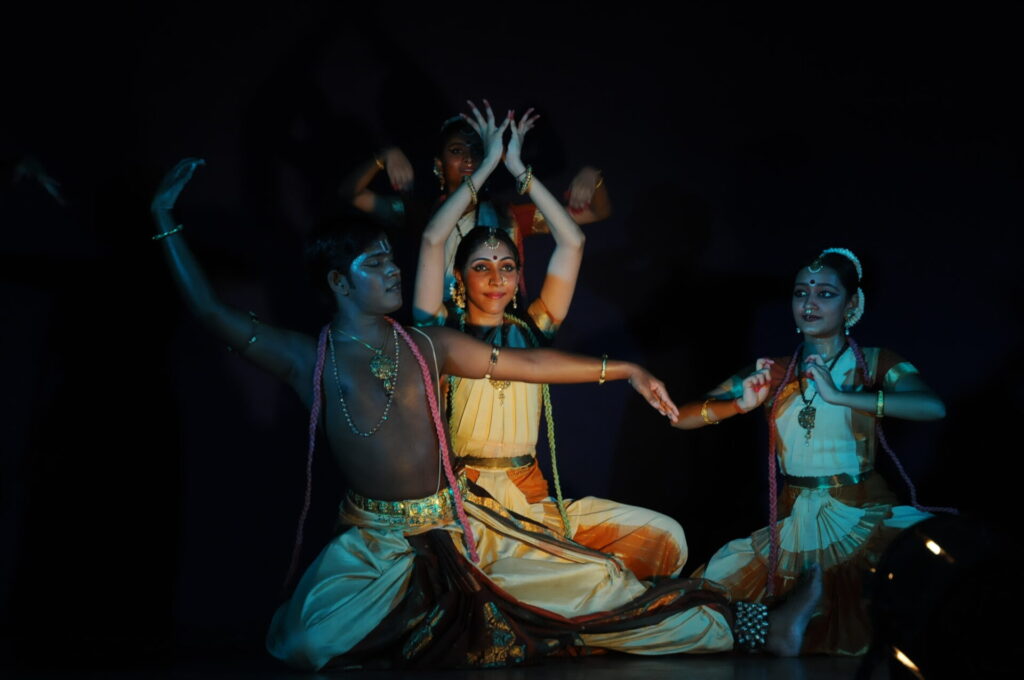
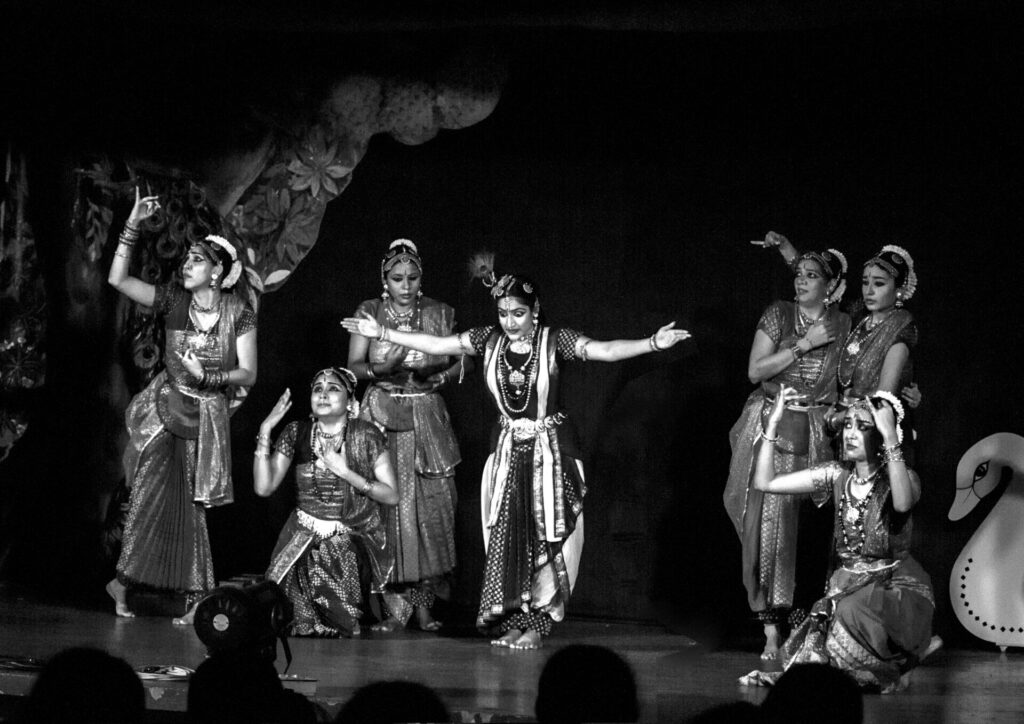
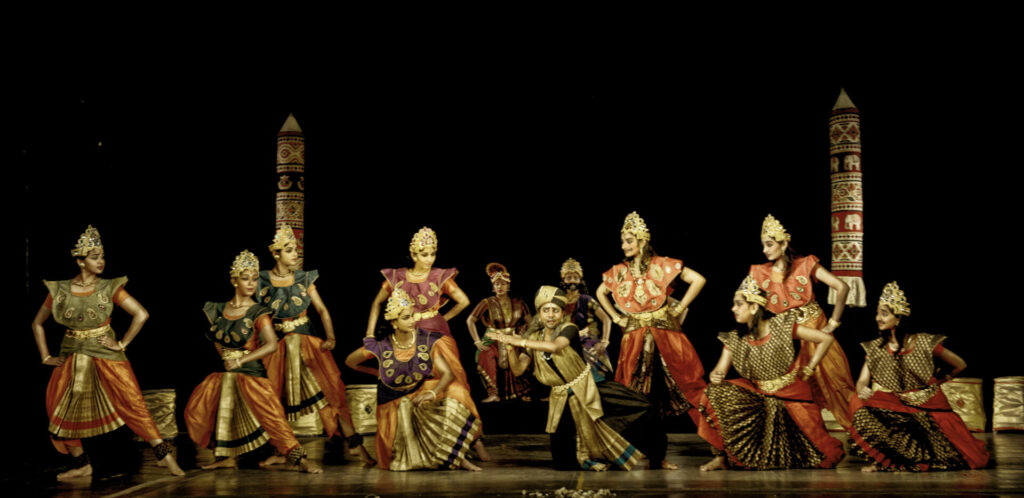
- From a creation perspective, the ensemble requires a different kind of vision, a different process of choreography, a different kind of time… What is usually your starting point and can you, in short, share your process with us?
The starting point for any group work of mine is the selection of the theme. It might be something that I have read, seen or heard. The inspiration may be the literary content, poetic imagery, musicality, emotional content or sometimes a work l have been commissioned.
My work guidelines often include looking at the time frame available to me; picking out salient features that bring out the essence of the theme and thereafter dividing them into scenes and determining the average duration of each scene; consulting with a scholar to select, edit and understand the poetry in-depth; exercising discretion with regard to what will be suitable for Natyam; discussing my thought process with a composer whose music inspires and provides yet another dimension to the theme; preparing a rough framework of the entire production before going into recording; being present for the recording sessions to have a clear understanding of all the musical nuances; working with dancers who are willing to invest time and effort; and finally planning on costumes and lighting.
- In the world of today, what are some of the challenges of creating ensemble work?
The expenses involved in creating an ensemble work are phenomenal while returns are minimal. The joy derived in the process of creation is the only reward. Ideally I would like to have a two-hour framework to be able to do justice to a production. But other than the premiere, the chances of presenting a work in its entirety is remote due to time constraints.
The dancers who form part of my production are school and college students or working professionals and not necessarily full-time dancers. To find a common time for ensemble work is hard. Moreover we do not get the same group of dancers every time we stage it. Training a new set of dancers every time takes a toll on your time and energy.
- One of your most challenging projects till date?
The most challenging work l have produced till date is the Panchali Sabadam of Mahakavi Bharatiar . While working on it, l realised the power of words and the tremendous impact that sound can have on the energy levels around you.
Panchali Sabadam premiered at the Cleveland Thyagaraja Utsavam in April 2014 with live music and dancers from across the globe. Later it was presented in Chennai with recorded music. Steeped in negative emotions like anger, jealousy, deceit and treachery , the work took a toll on the editor of the literary work ( Dr S Raghuraman), music composer (Dr Rajkumar Bharati) , the musicians who contributed to the recording, the soundscape engineer (Sai Shravanam) and the dancers.
To bring alive each of the characters with authenticity and produce a visual as strong and powerful as the lyrics and the music was a herculean task.
Radhika Shurajit
“I believe that each dancer has a personality of their own and even though the movements look the same, each of them brings to the work their own interpretive approach to the choreography,” says Chennai-based Bharatanatyam exponent, Radhika Shurajit
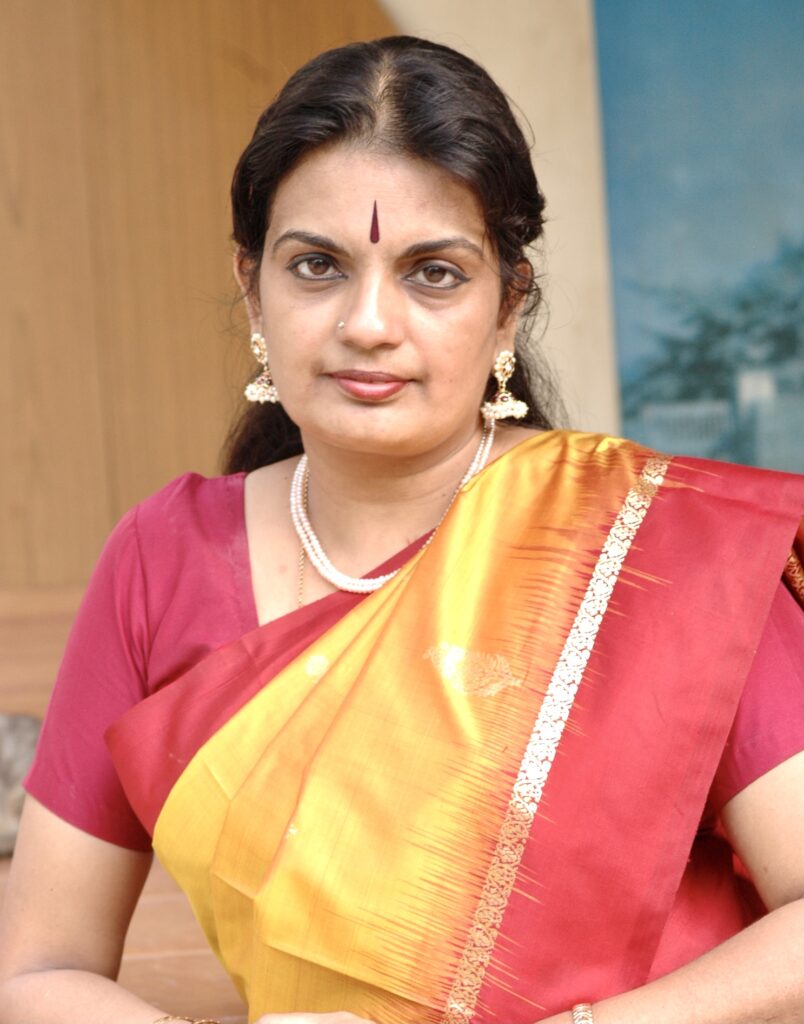
- What, in your view, is the magic of the ensemble?
For me, the magic of the ensemble lies in perfect coordination and group chemistry. It is not that the group is doing things in an identical manner but in an ensemble, it is the spirit of the group that needs to be intact; I don’t believe in creating productions where the artistes look like each other; all of the same kind.
I believe that each dancer has a personality of their own and even though the movements look the same, each of them brings to the work their own interpretive approach to the choreography.
The magic is that, for the audience, this appeal is richer, more special than watching a dancer perform solo. Let’s say it is a different kind of a Rasanubhava; the ensemble always challenges me as a choreographer because it always makes me think about how to use the space within the musical time.
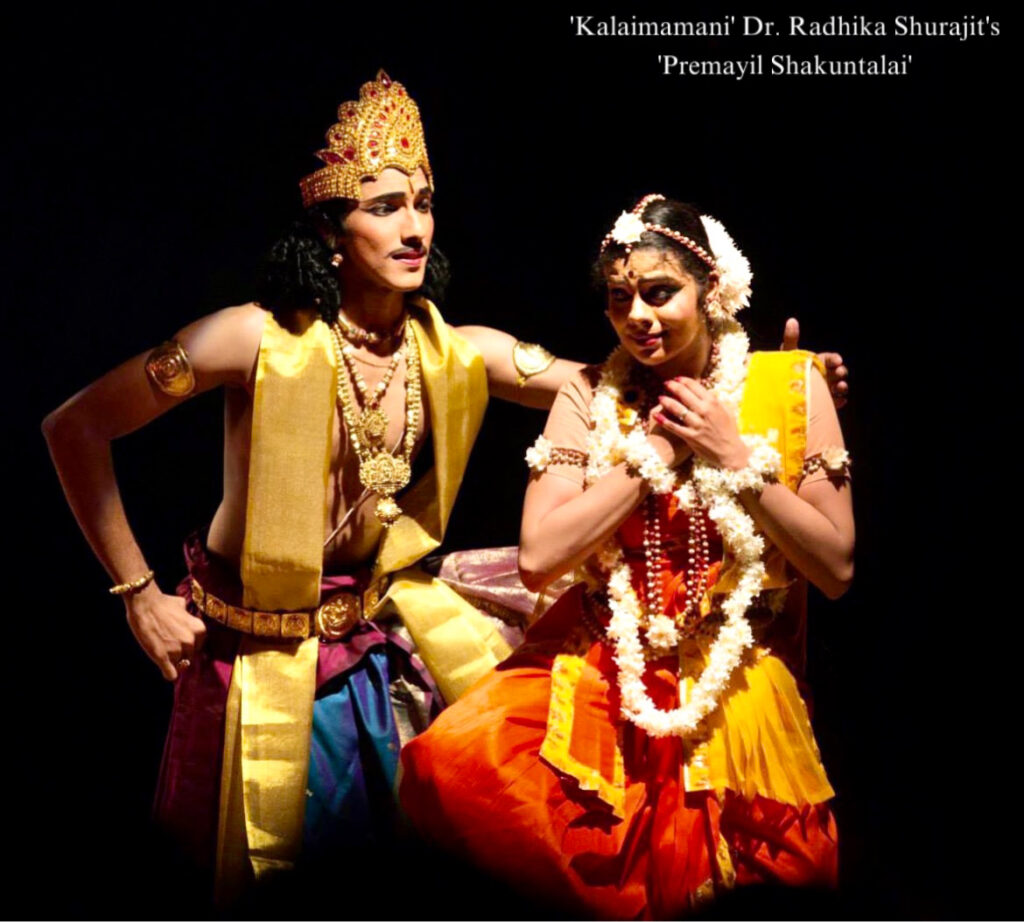
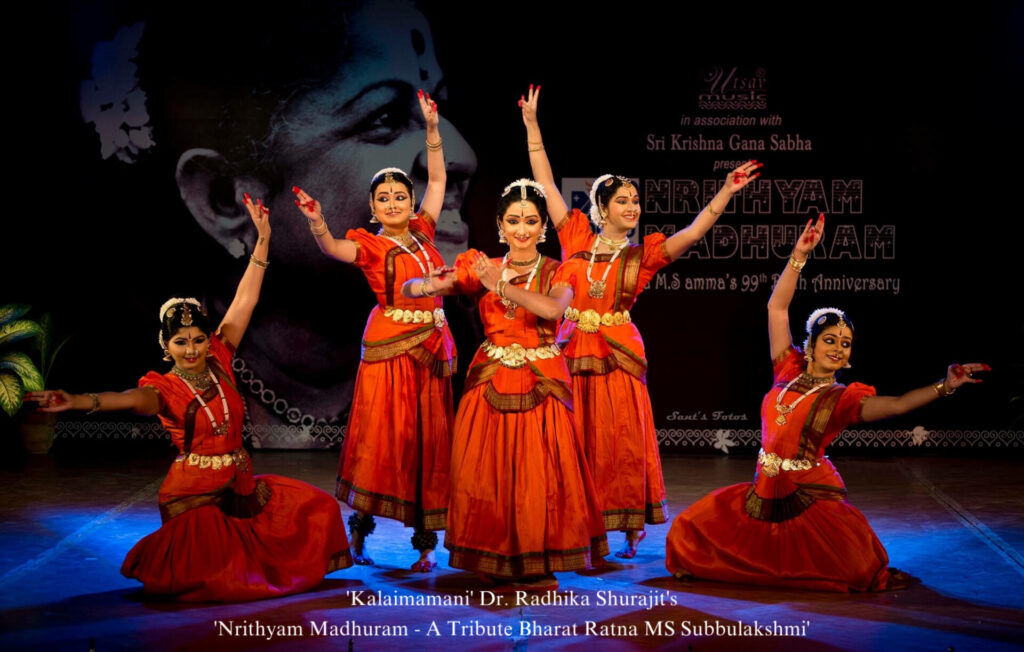
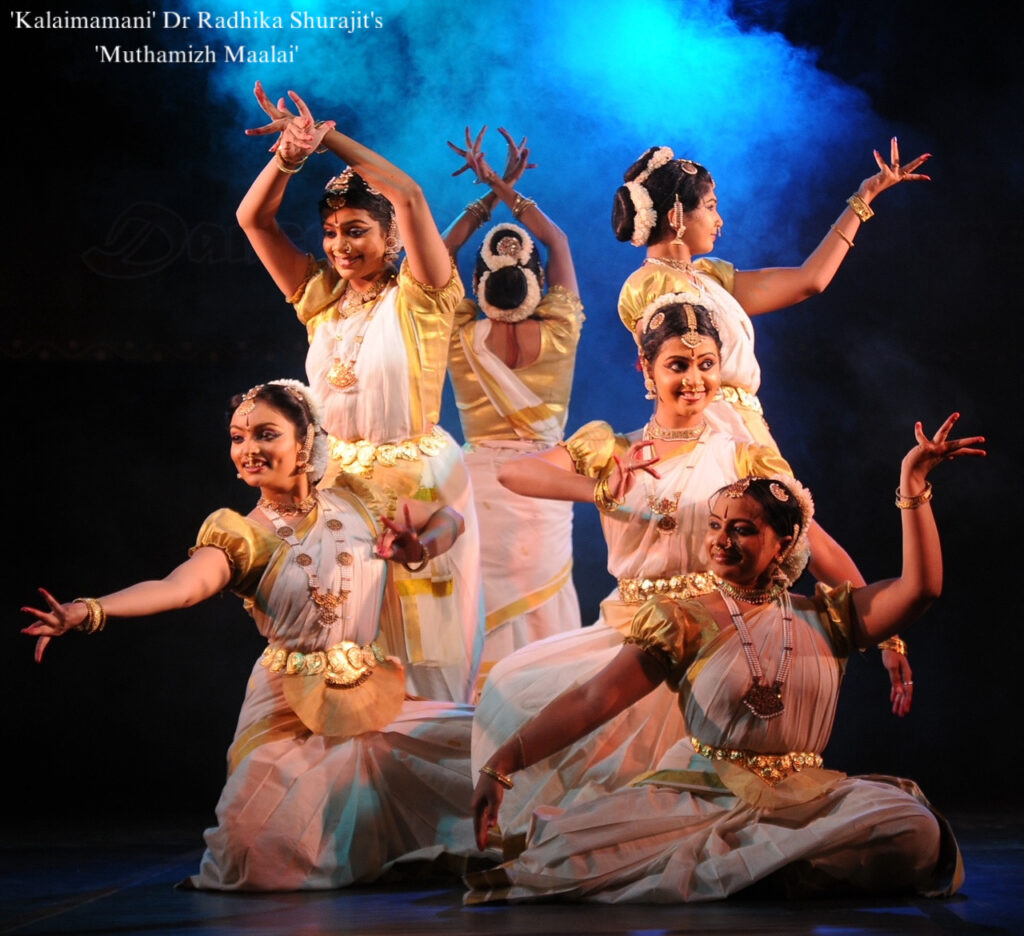
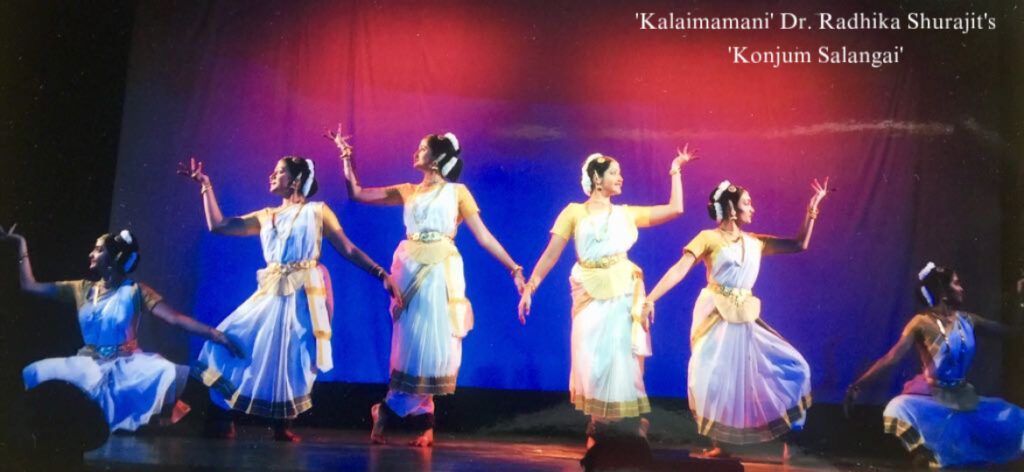
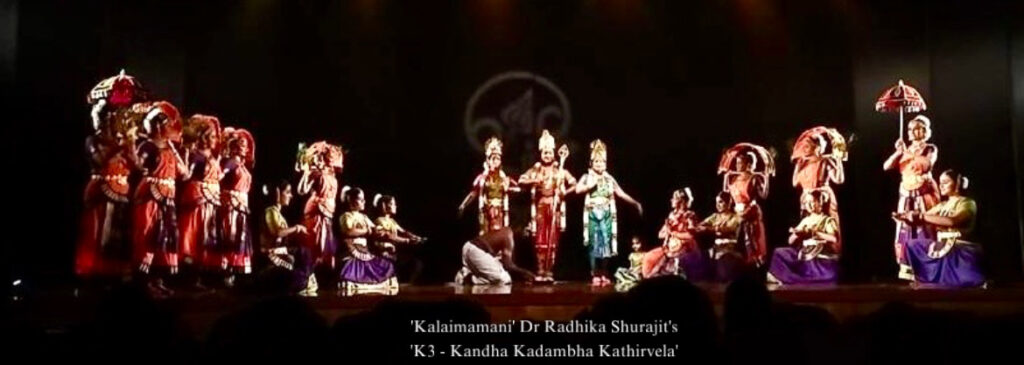
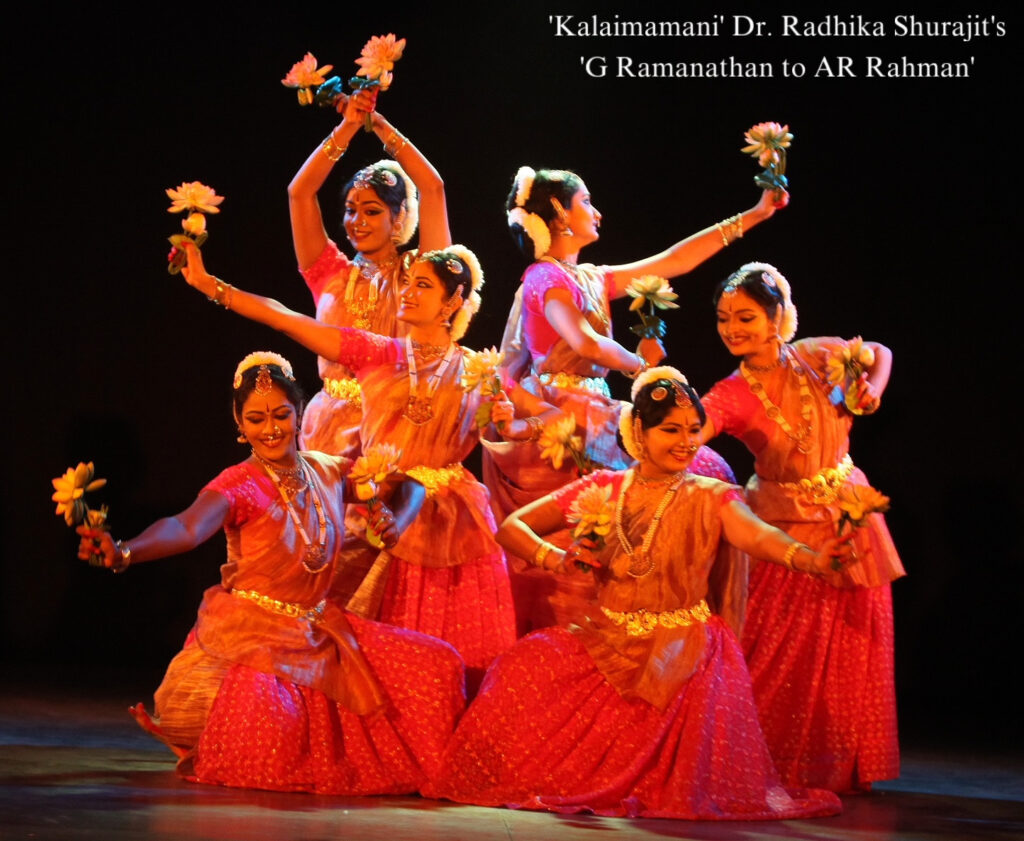
- From a creation perspective, the ensemble requires a different kind of vision, a different process of choreography, a different kind of time… What is usually your starting point and can you, in short, share your process with us?
I begin with going in-depth into the meaning of the piece. In the context of creating an ensemble, the choreographic process has to be built in a way that the content of the piece is communicated visually through appropriate movements.
I love to create a sense of geometry with the dancers. All my choreographies have a lot of geometric patterns; but having said that, it’s not enough to just merely create patterns. It is about how the dancers move from one pattern and do so, with a sense of seamless flow.
For me, music is crucial. It is always my inspiration. Sometimes, even a simple count of a Sarva Lagu inspires me, like a Thaka Dhimi Thaka Janu. I always try to reflect on the nuances of the music through the nuances of choreography. That becomes my creative process.
Speaking of choreography, especially for a group, I have not had the luxury of dancers coming and standing in person for me to start thinking of choreography. So, of late, I choreograph on paper; everything is jotted down as notes.
So when my dancers arrive – and dancers are so strapped for time, these days – all I need to do is just translate the choreography from paper onto them.
Along the course, there are edits and changes we make; I like transitions in between geometric patterns. I always believe that dancers who are a part of an ensemble should not be like wooden dancers, where they don’t communicate but dance beautifully. For me, even Nritta in dancing has a lot of Abhinaya. Each movement has a different feel and I make sure that the ensemble captures that.
- In the world of today, what are some of the challenges of creating ensemble work?
You see, it’s not really enough if you have an idea. To realise an idea, is often very expensive. For starters, we need a lot of dancers trained to the same level and standards. Then there are costumes which have to be made especially for a production; then, there is lighting, rehearsal space and a whole host of other aspects that make creating ensemble work, a very expensive and exhaustive affair.
Having said that, I must acknowledge that I am fortunate to have a small dance studio, and I try to manage with that. But there are times when I create choreography for larger works like the one I did recently for a show in London that was for the Sri Lankan Tamil Association. We had nearly 300 dancers on stage and all of them were coming from different parts of Europe and assembling on the day of the performance.
In cases like these, I choreograph the work with a couple of my students and send a video of the same to the dancers who are often trained by their teachers. Once, I worked on something for Kalaingar Karunanidhi, Kavia Kalaingar 84, where we had nearly 400 dancers performing. I managed to find a huge playground where we could train.
I loved this challenge as it was also a huge learning experience for me.
Normally creating ensemble work is a lot of money. For instance, music digitized in a professional studio costs a few lakhs. Budget is often a huge constraint for us, dancers, who think and create work for an ensemble. And after all this, to ensure the work reaches a wide and large audience, it is crucial also to spend huge amounts on marketing and publicity.
- One of your most challenging projects till date?
Every production throws a different kind of challenge my way. For instance, the Kandha Sashti Kavacham was only a mantra, a shlokam. It was not easy to have embarked on a project where I attempted to execute this shlokam visually, ensuring it appealed to the audience and yet retained its essence.
Choreographing songs of cinema is also a big challenge because these songs are often very short in terms of duration. Sometimes, when you perform the original score, it is only three-and-a-half minutes or so.
The challenge is really about how to create choreography within that time limit without making it look rushed but also to ensure it is appealing and creates an impact.
As a classical dancer, when I approach good classical music from the celluloid, it’s quite a challenge to re-create the magic of the songs that have left deep impressions on people’s minds; these songs are often stored in their memories and to make them forget their matinee idols, even for a moment, is no mean feat.
Sheela Unnikrishnan
“I prefer to stage the productions I create as many times as possible considering the amount of time, money and effort one invests in it… I tend to pick subjects that have the potential to attract people irrespective of their knowledge in the art form and age,” says Bharatanatyam exponent, Sheela Unnikrishnan, speaking of ensemble work she creates under the umbrella of Sridevi Nrithyalaya
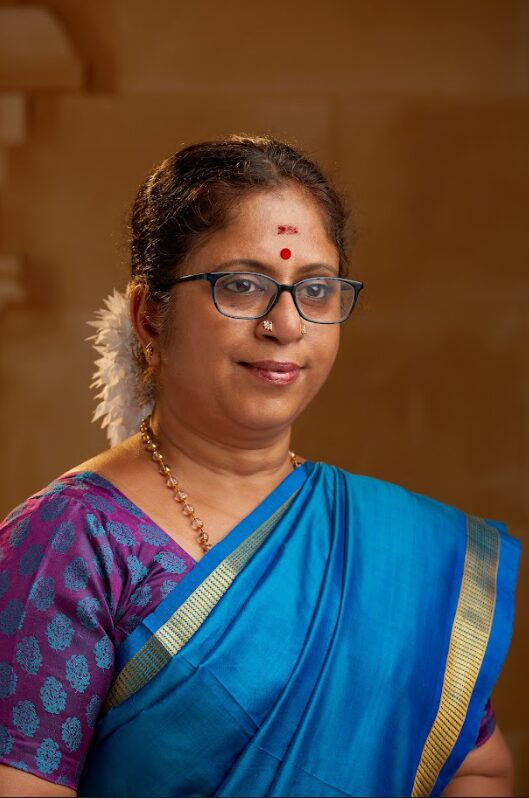
- What, in your view, is the magic of the ensemble?
The magic of the ensemble lies in its ability to captivate a broad audience through its dynamic and visually engaging nature, accessible to all regardless of their background in the arts. The impressive synchronization of performers moving and acting in perfect unison, showcases exceptional skill and collective effort, creating an awe-inspiring spectacle.
Seamless transitions between formations add sophistication and maintain audience intrigue, demonstrating exceptional coordination and choreography. Additionally, diverse characterisation within the ensemble enriches the narrative, offering a multi-faceted storytelling approach that makes the performance relatable and immersive.
These elements together create a magical experience that highlights the beauty of collective effort and artistic expression.
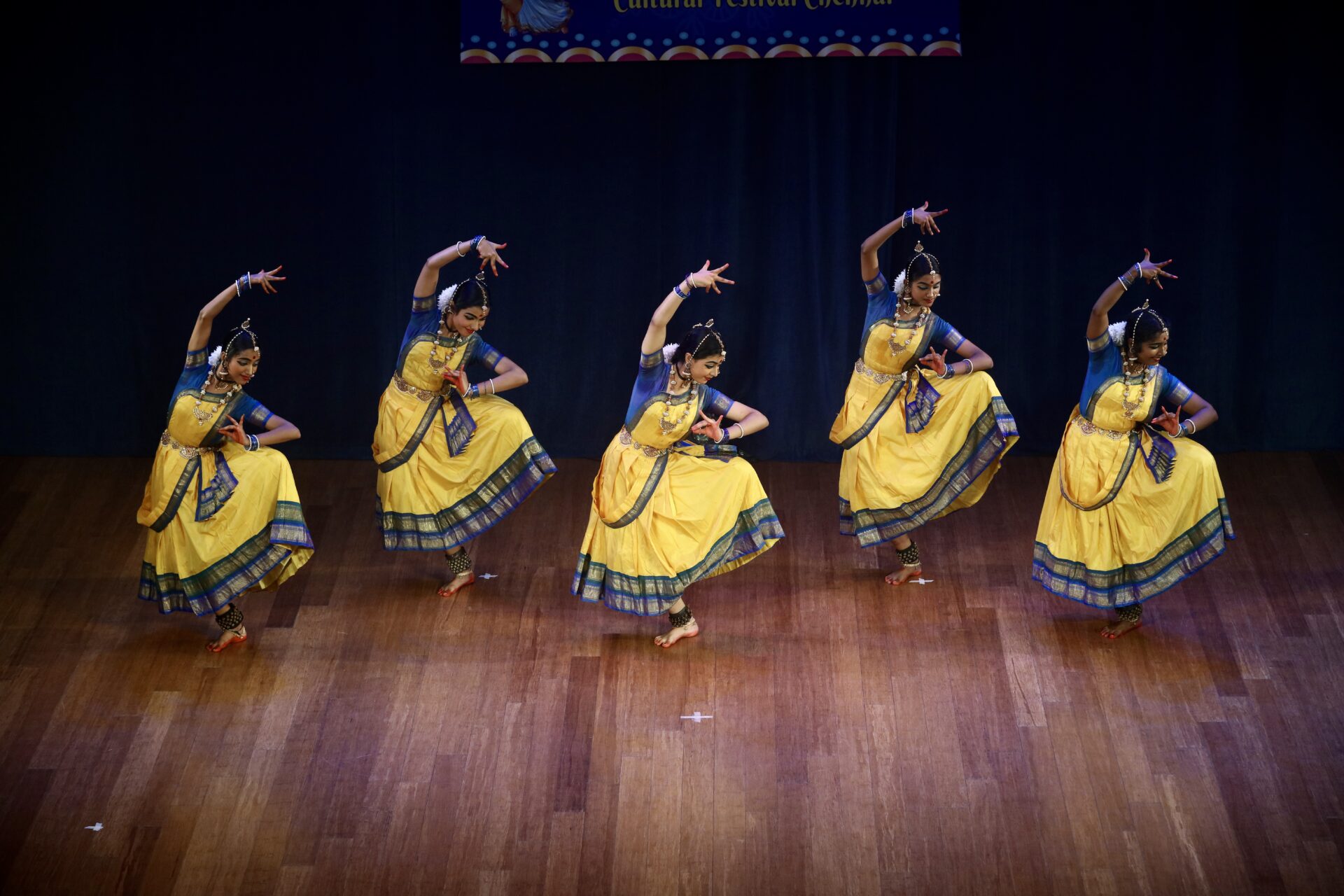
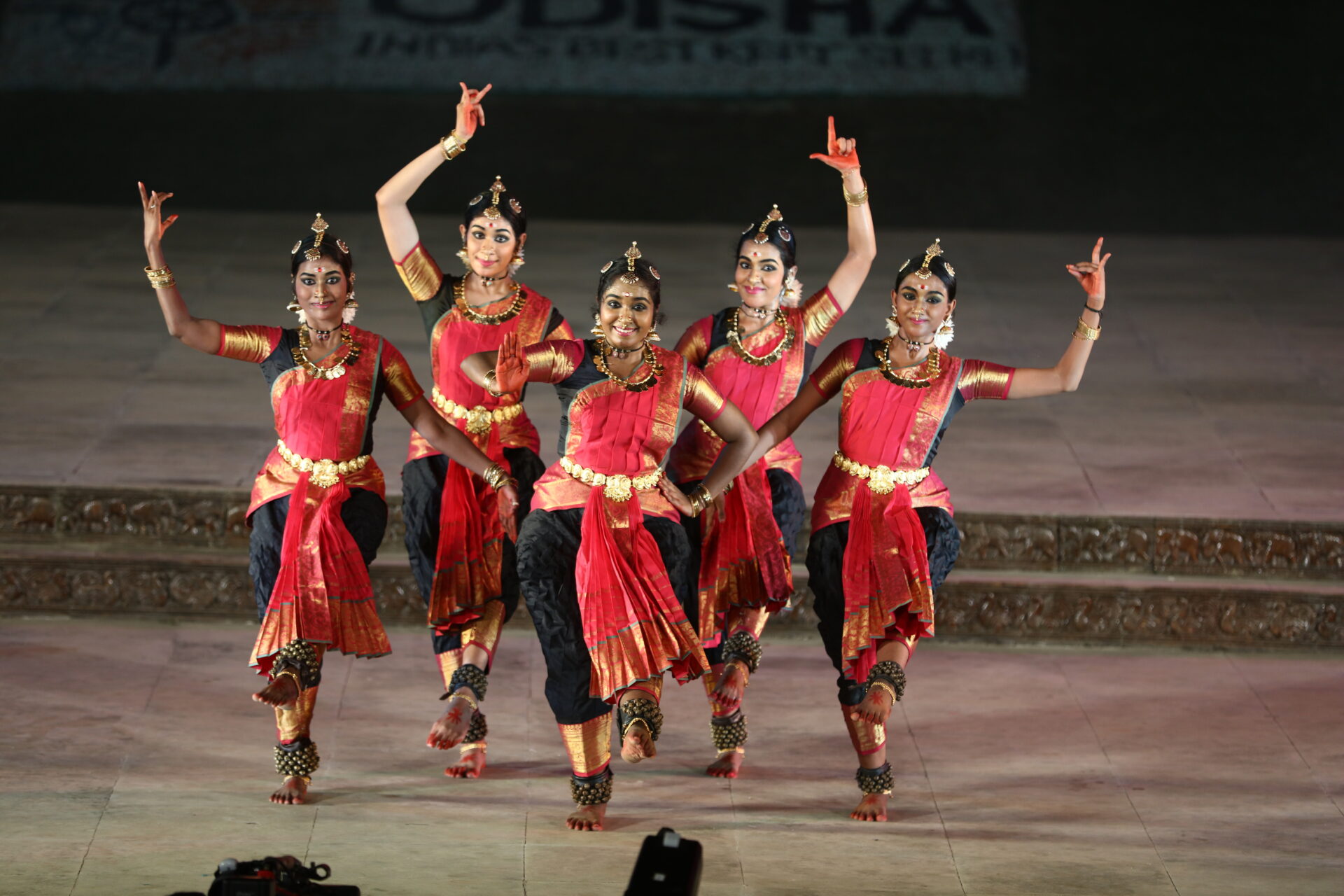
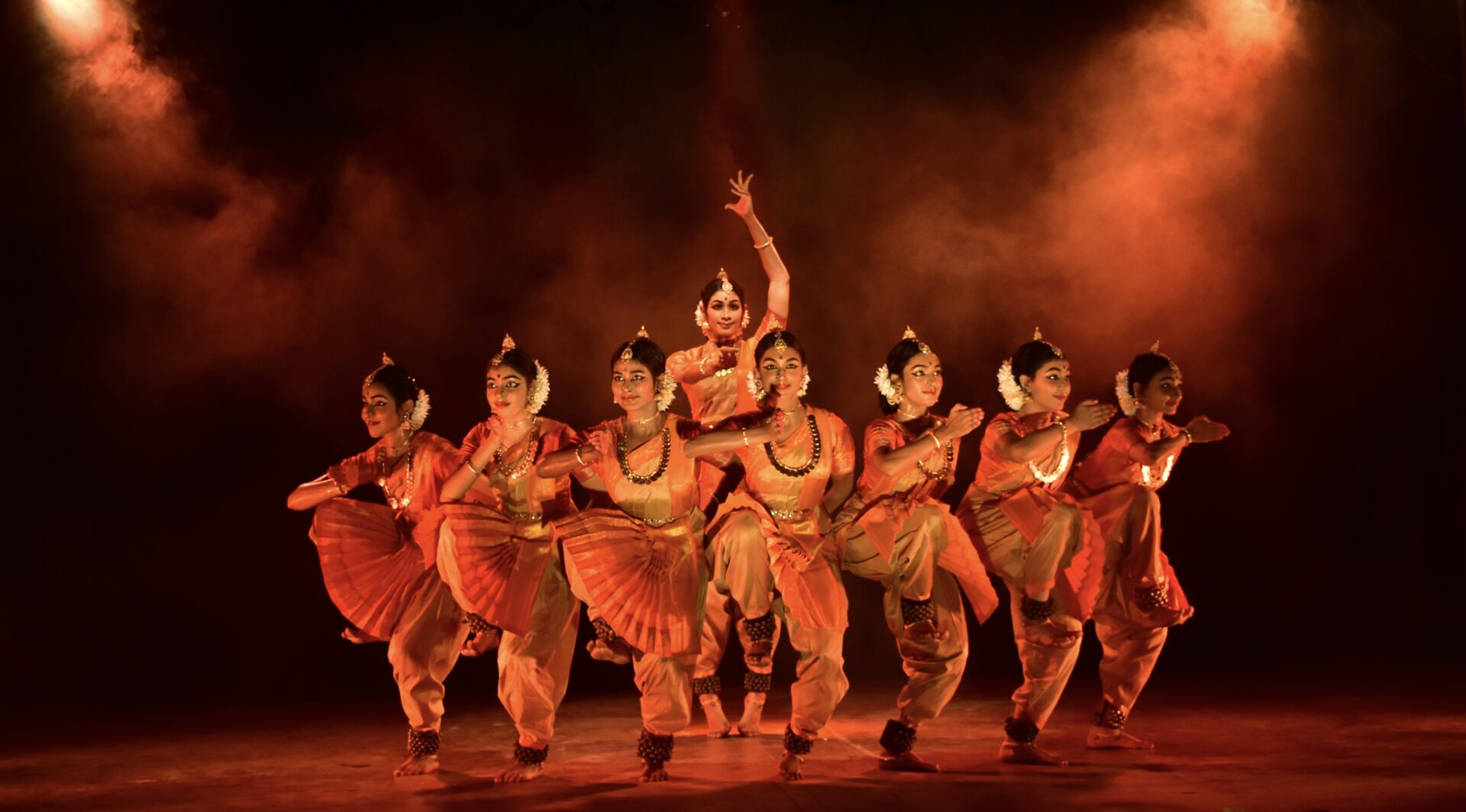
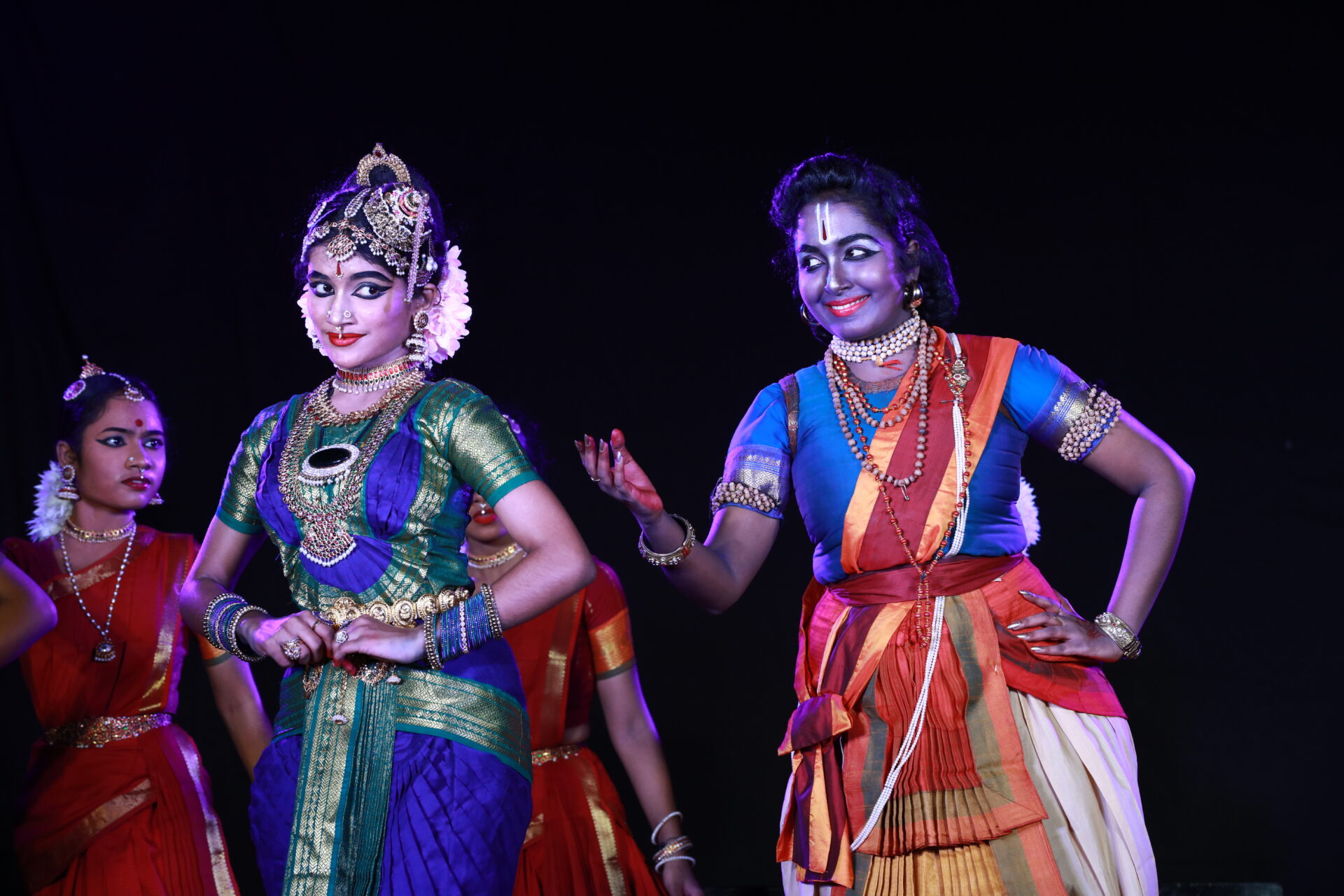
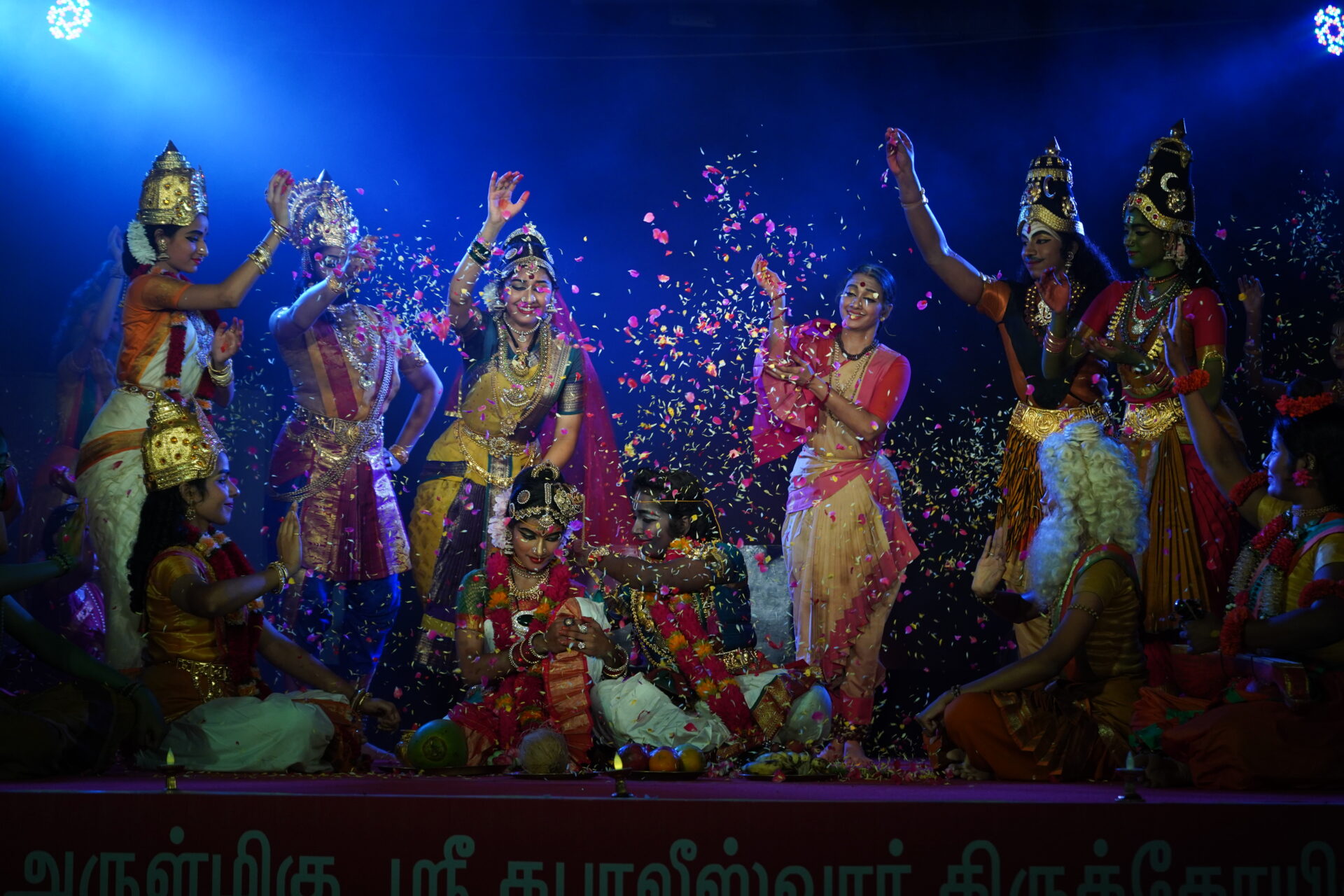
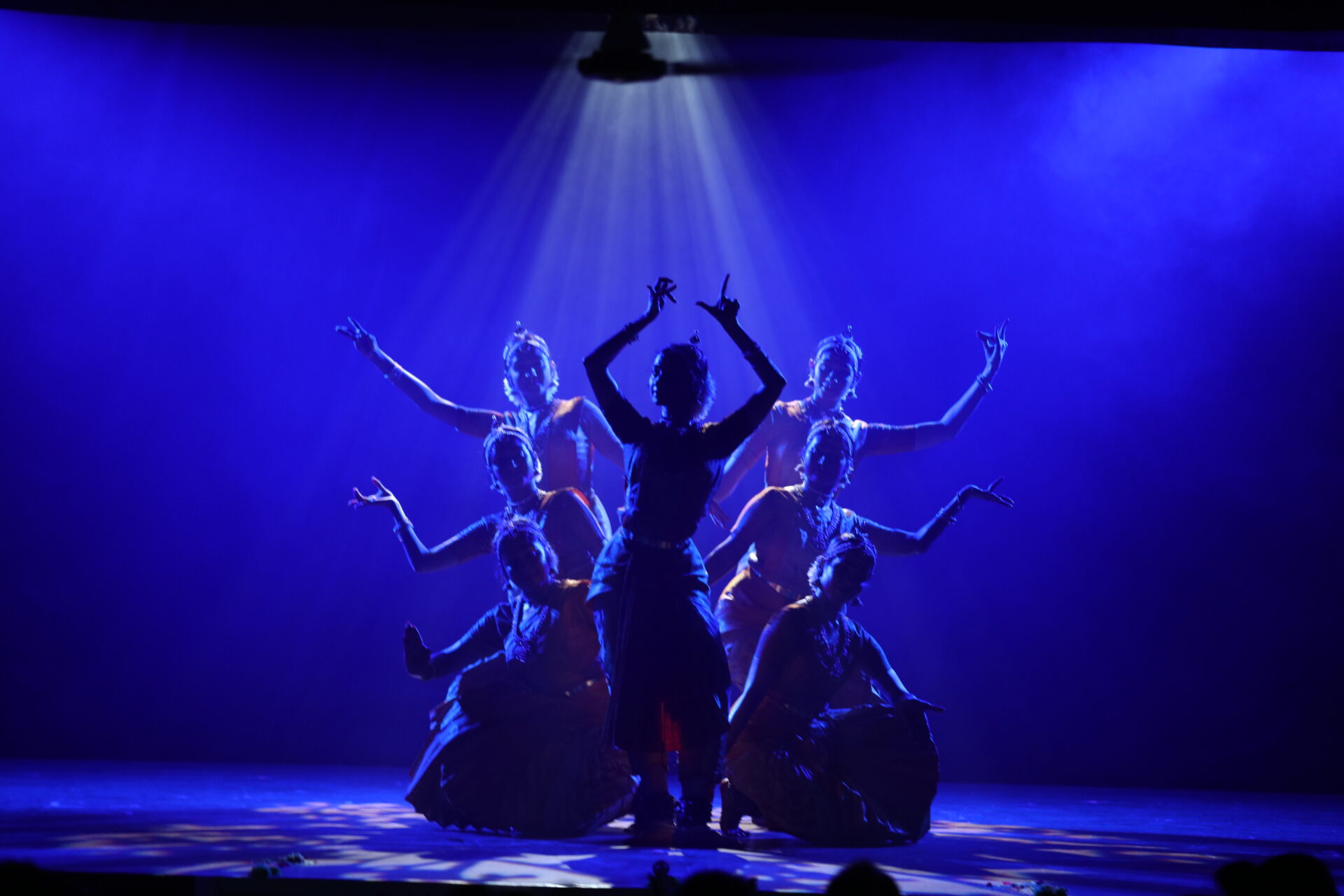
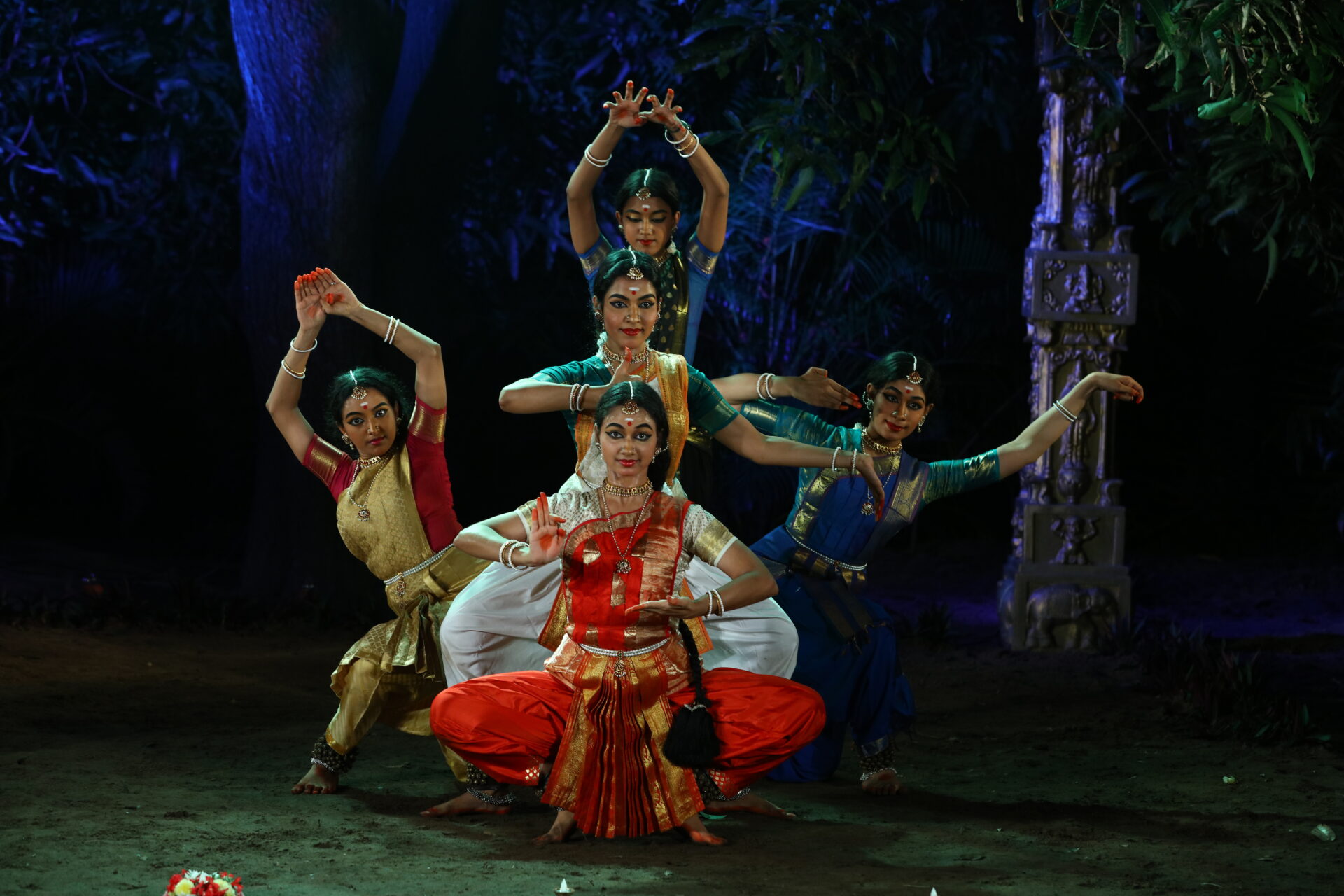
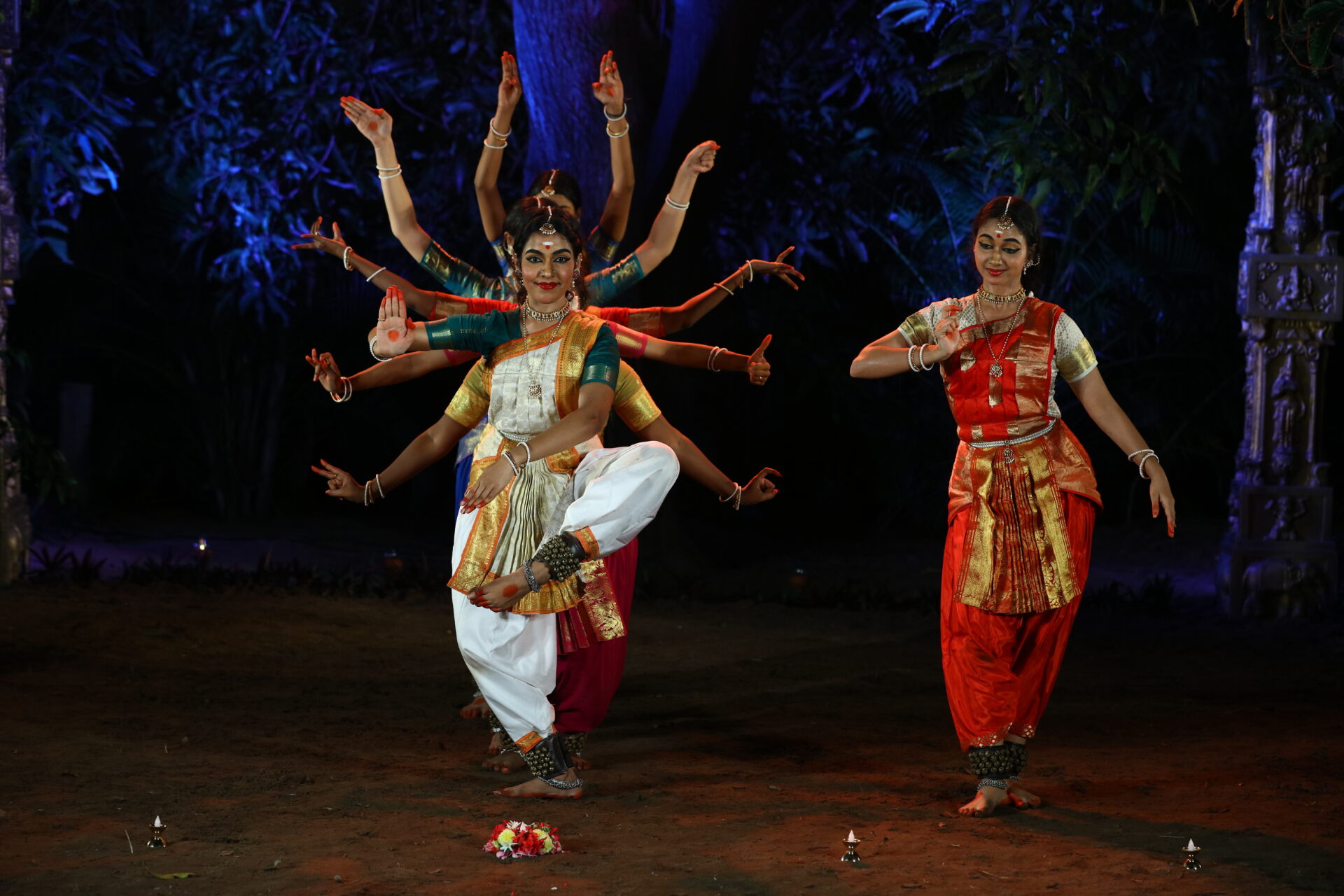
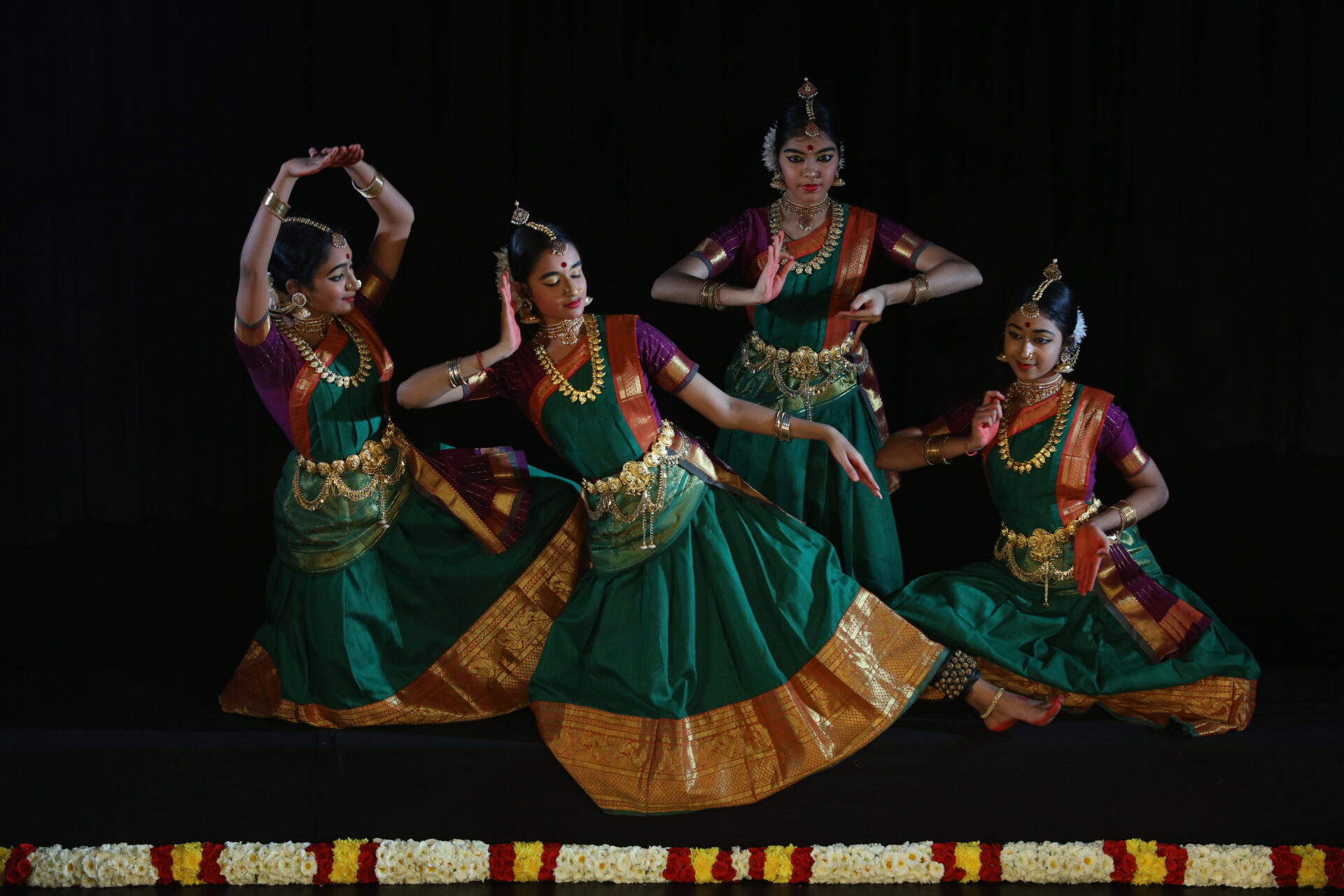
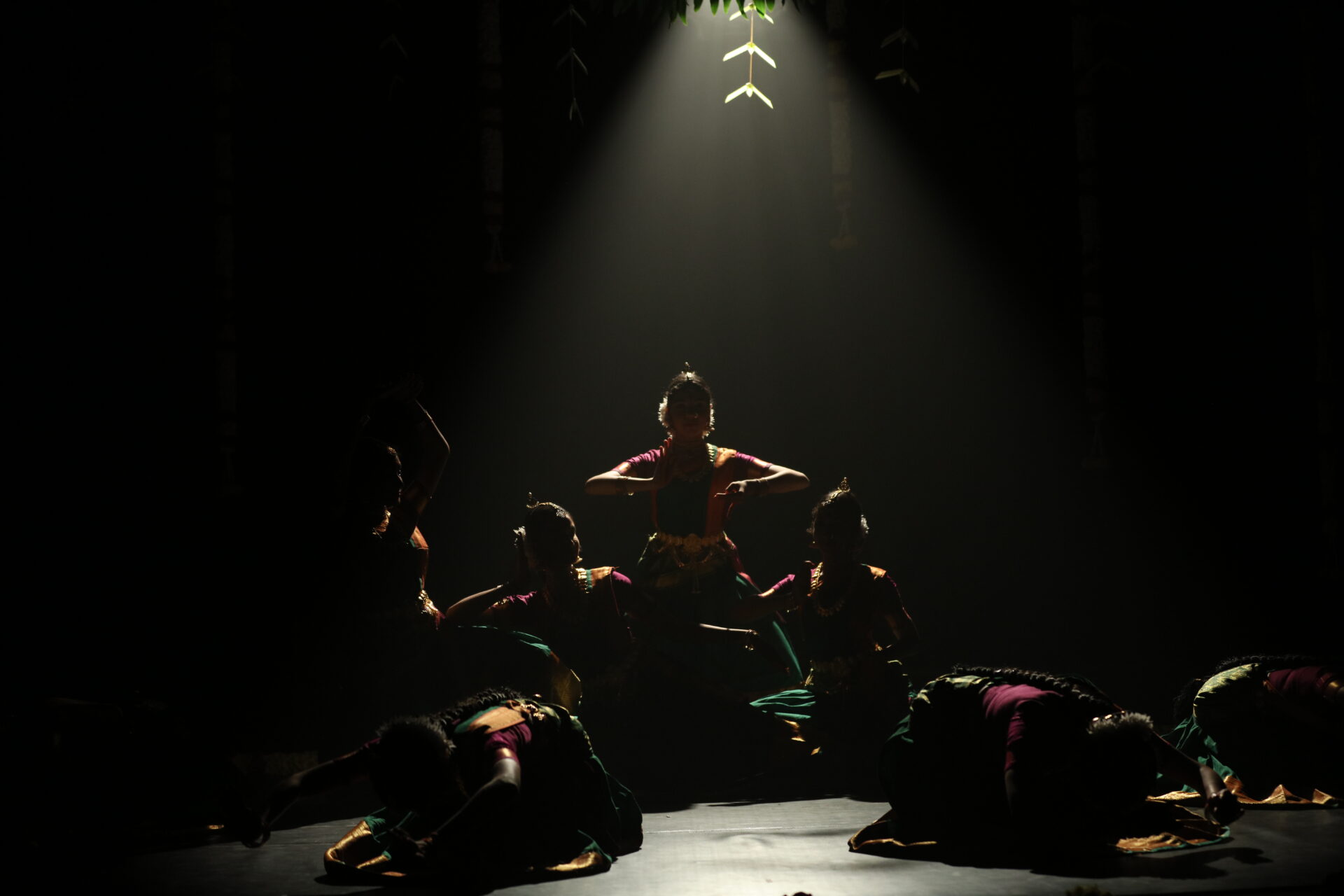
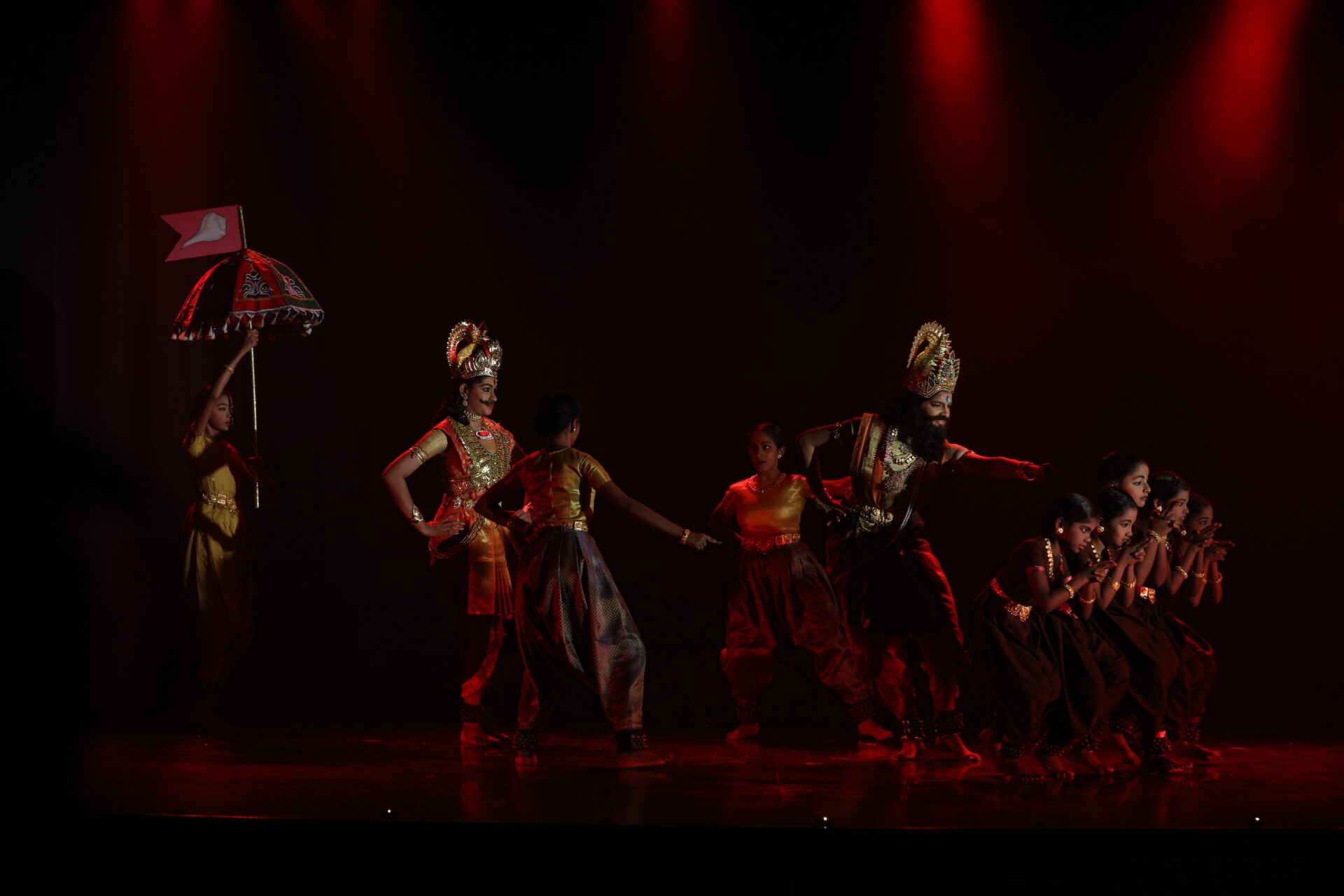
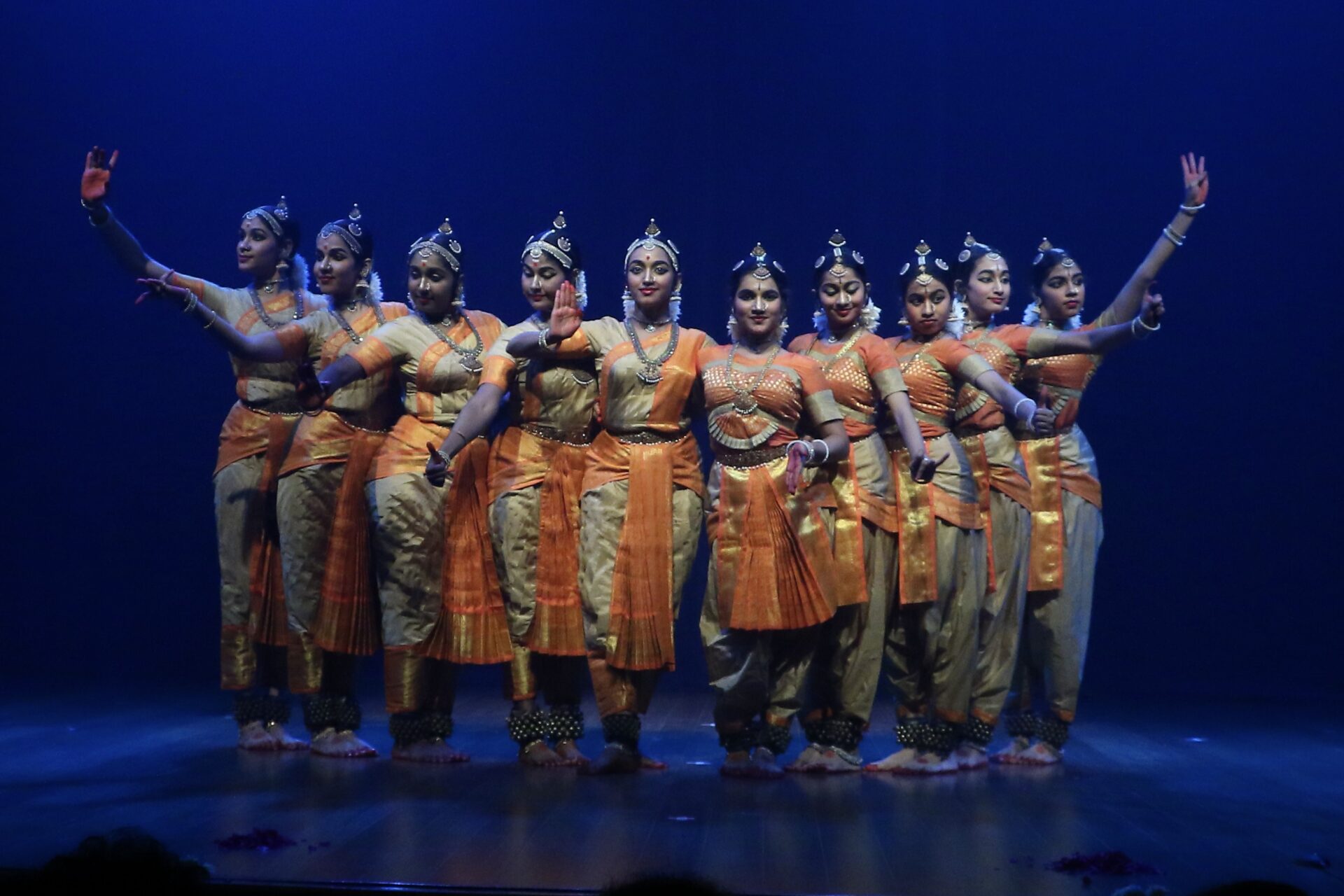
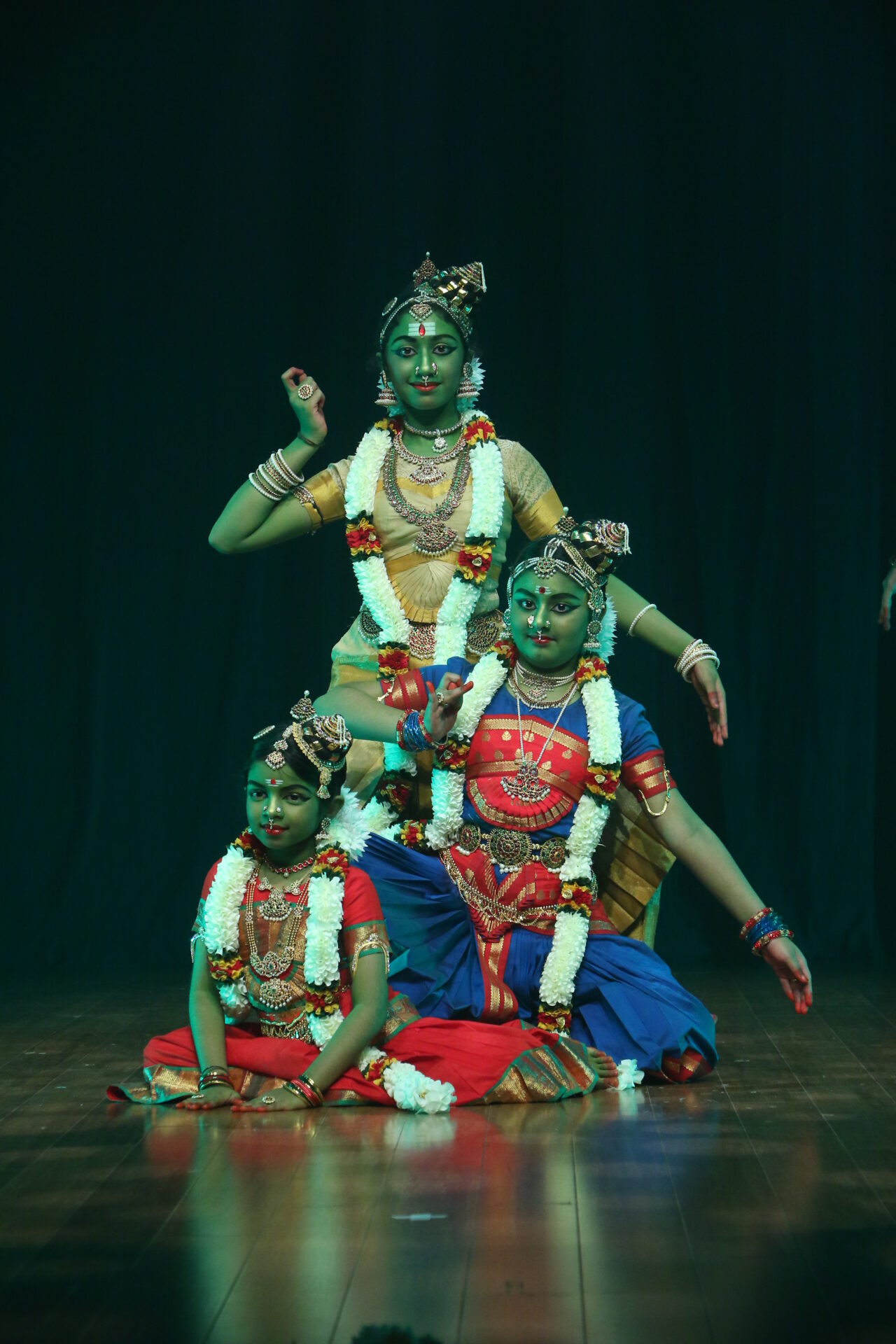
- From a creation perspective, the ensemble requires a different kind of vision, a different process of choreography, a different kind of time… What is usually your starting point and can you, in short, share your process with us?
Creating an ensemble piece involves a unique and intricate process.
I start with the selection of the theme, ensuring it resonates with both the performers and the audience. Once the theme is chosen, I move to the study of lyrics, delving into the words to understand their deeper meaning and emotional nuances.
Next is the composition of music, where I work closely with musicians to create a score that complements the theme and lyrics. Following this, I finalise the orchestra, selecting instruments and musicians that best suit the composition.
I also oversee the audio recording to ensure high-quality and apt sound that will enhance the performance. With the music in place, I proceed to choreograph for the subject, designing movements that align with the theme and musicality.
Training and practice sessions are crucial, where performers refine their synchronization and fluidity. Concurrently, Shobha plans costumes and accessories, ensuring they reflect the theme and enhance the visual appeal. If props are necessary, I incorporate them to add depth to the performance. I also work on light design to create the right mood and highlight key moments.
Finally, we conduct stage rehearsals to fine-tune all elements, followed by the performance, where all components come together to create a magical and cohesive experience for the audience.
- In the world of today, what are some of the challenges of creating ensemble work?
Creating ensemble work today faces several significant challenges.
Firstly, ensuring the availability of dancers throughout the choreography and practice sessions can be difficult. Dancers often have diverse schedules and commitments, making it hard to coordinate consistent practice times.
Secondly, the time span required for developing an ensemble piece is extensive. From initial concept to final performance, it involves numerous stages that demand patience and prolonged dedication from all participants.
Getting an appropriate practice space is another challenge; especially finding the ones that can accommodate the large number of students that are involved in my dance dramas.
Lastly, the cost involved in creating an ensemble performance is considerable. Expenses include acquiring costumes and props and recording music, all of which can add up quickly and strain budgets.
- One of your most challenging projects till date?
I’d say it is Sri Krishna Vaibhavam (especially the Nauka scene and the Kurukshetra scene) that we premiered in 2012 and Vande Mataram, a social themed project with no lyrics and only instrumental music that we presented in 2019.









